October 7, 2018
Martha O'Kennon
The flowers are a-falling.... But there was enough color and sun, though rain sprinkled through, so I can't say the color is over. The Colchicums, which come up in spring as rich green floppy leaves, come back in fall with no leaves but these magnificent flowers. They too are floppy and a heavy rain could have beaten them to the ground. But they escaped for at least a week. Here's the last of the goldenrod in the far patch. But don't get too sad. The fading goldenrod invites some interesting bugs to come and visit. Third is a leaf from a night-shade vine. Maybe that's why they called it the Purple Nightshadow. (I believe that this is actually a Woods Nightshade.)
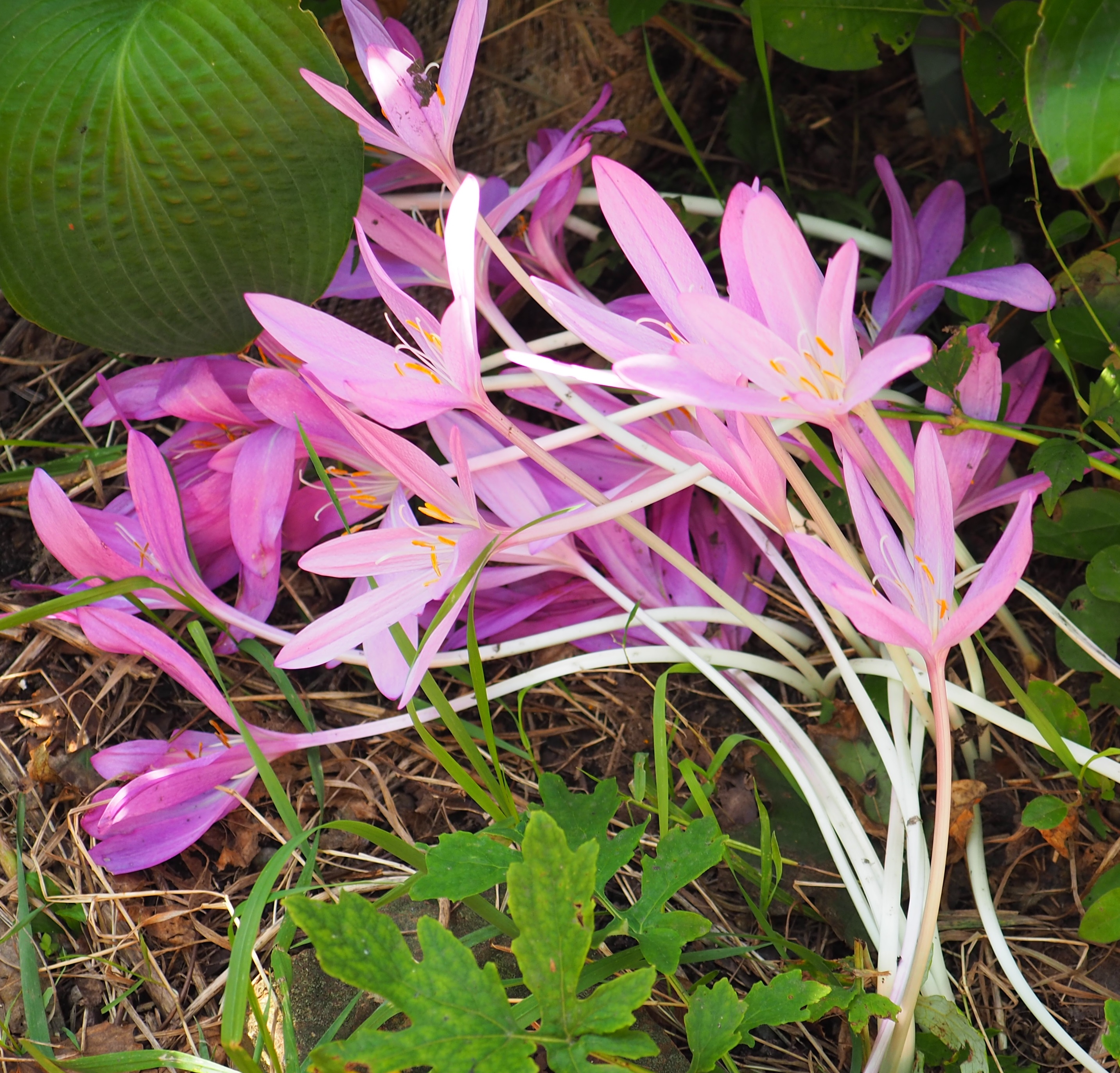 -
-
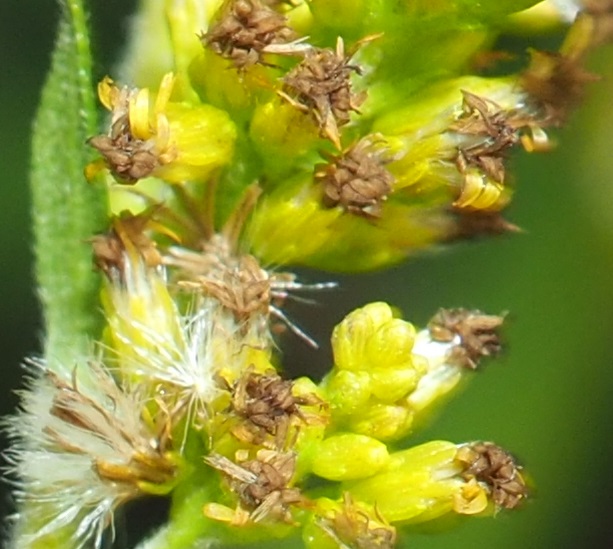
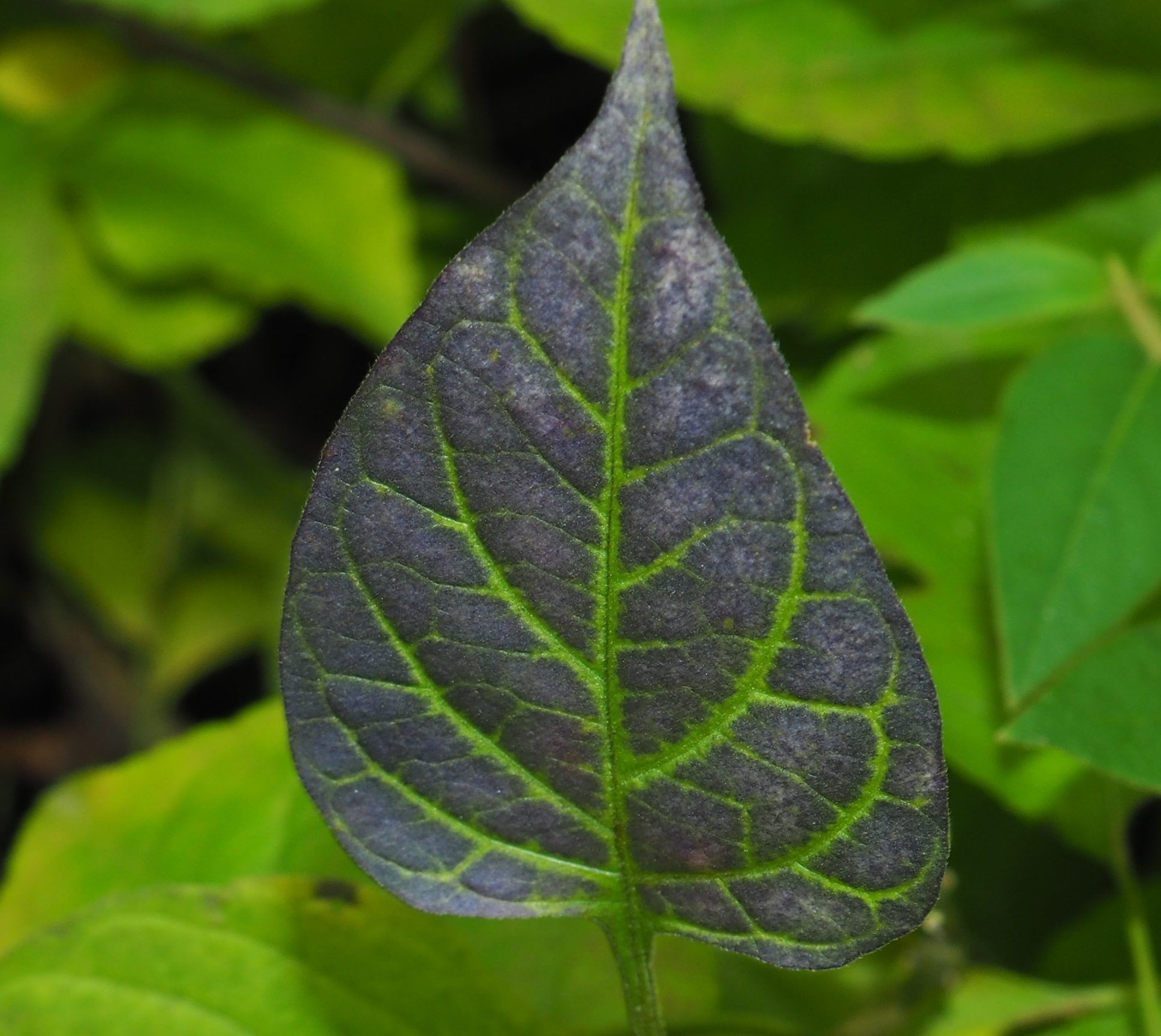
Remember that there is information in the name of the file for each image. You can see it by mousing over the image - look at the lower left of the screen. Or you can click on the image to get to the (usually) larger image. Then the info is displayed in the address line above. Sometimes the second click will actually display a different view of the original image.
Ants? Just our old friend the red-middled Carpenter Ant. But we were happy to see that although most all the goldenrod tops had been chopped down, a few aphids still persist in a few browning tops.
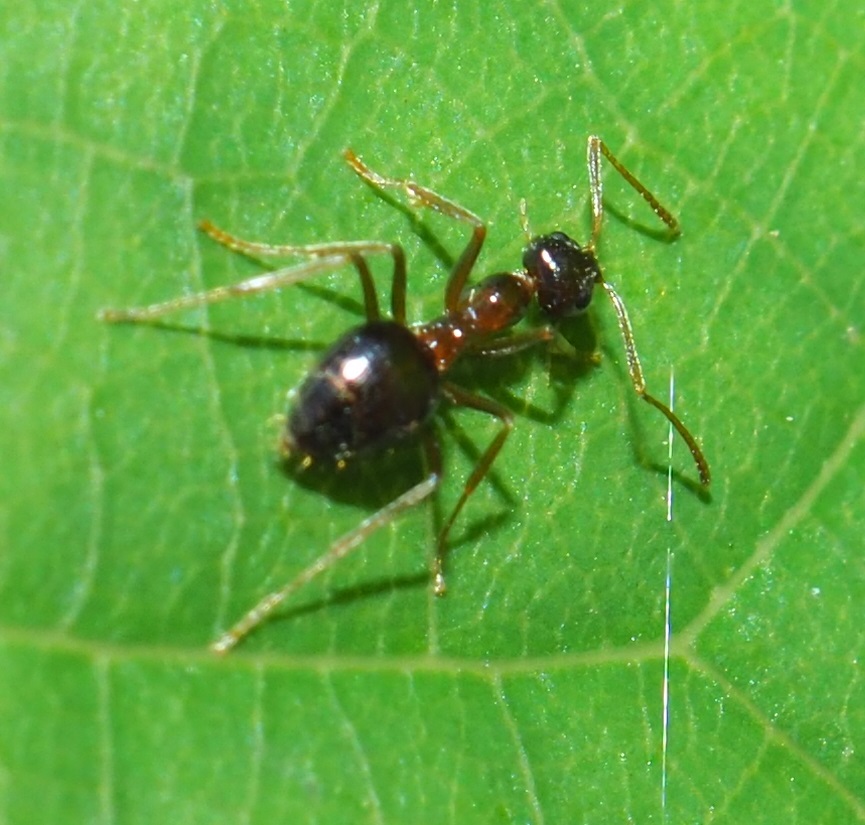
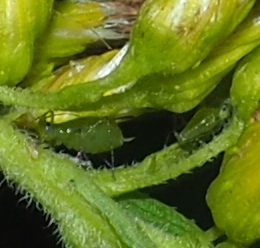
We did all right for barklice though. This first one is so shiny it reflects back the light from the camera. I bet you will remember it as the one with the funny name - Polypsocus corruptus. Second, Polypsocus cruciatus is a fellow member of the same genus and is totally different from the first image. We haven't seen it in months. But now it should increase its appearances for a while. Third, the scaly-winged one we saw last week was still here. Fourth is what I think would make a lovely fabric design: barklouse Trichadenotecnum alexanderae complex. A fifth bug has a head shaped like some of the barklice, so just maybe. I haven't found it in any lists. Yet.
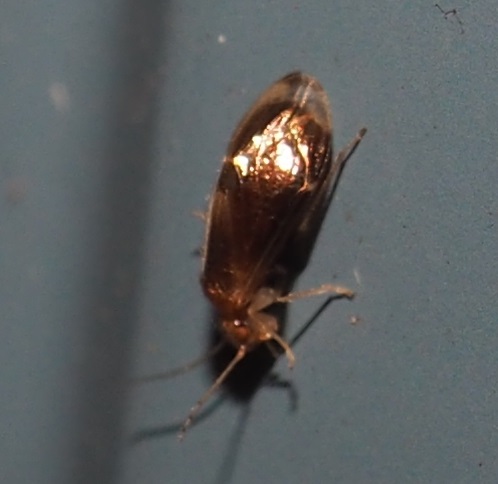
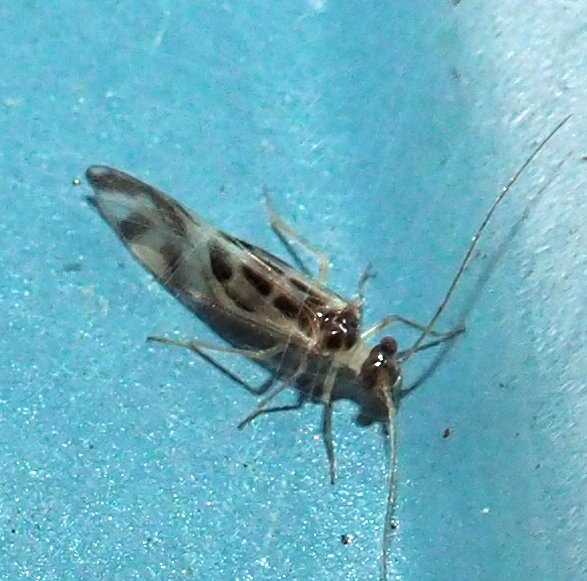
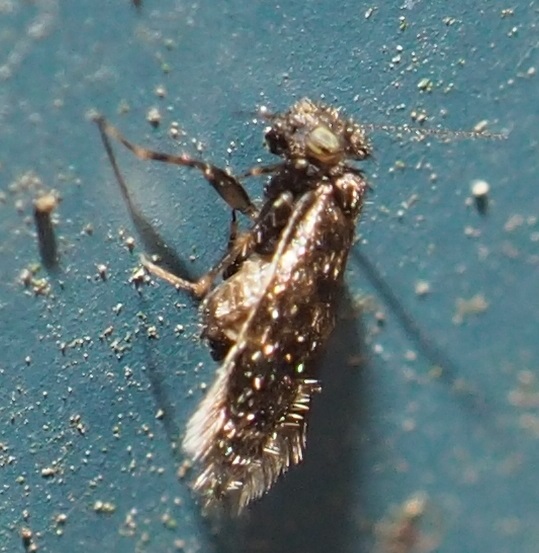
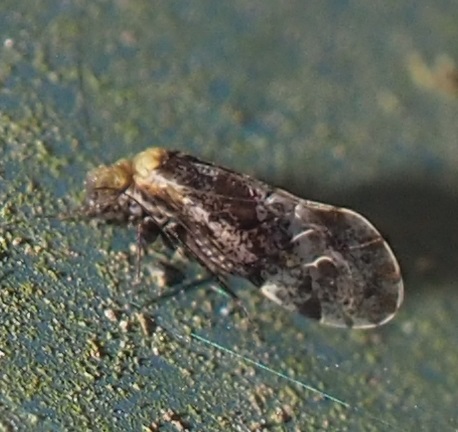
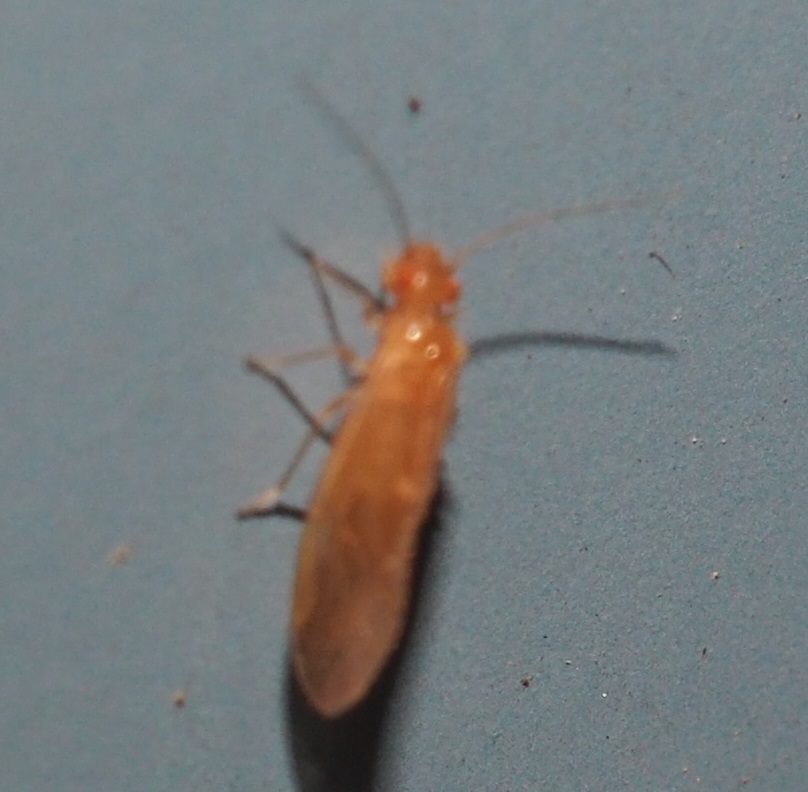
Bees are still around to some extent. I had never noticed three patches of tiny daisies that played a good role at the end of the asters.. Here's one of them. I believe that I had taken this picture thinking that the yellow thing hanging off the center of the flower was a yellow bug but I changed my mind....They were most delightful to the very smallest bees and wasps. The Common Eastern Bumblebee is still here along with a few smaller bees. But to my mind, the most delicious sight in the world is a Silky Striped Sweat Bee.
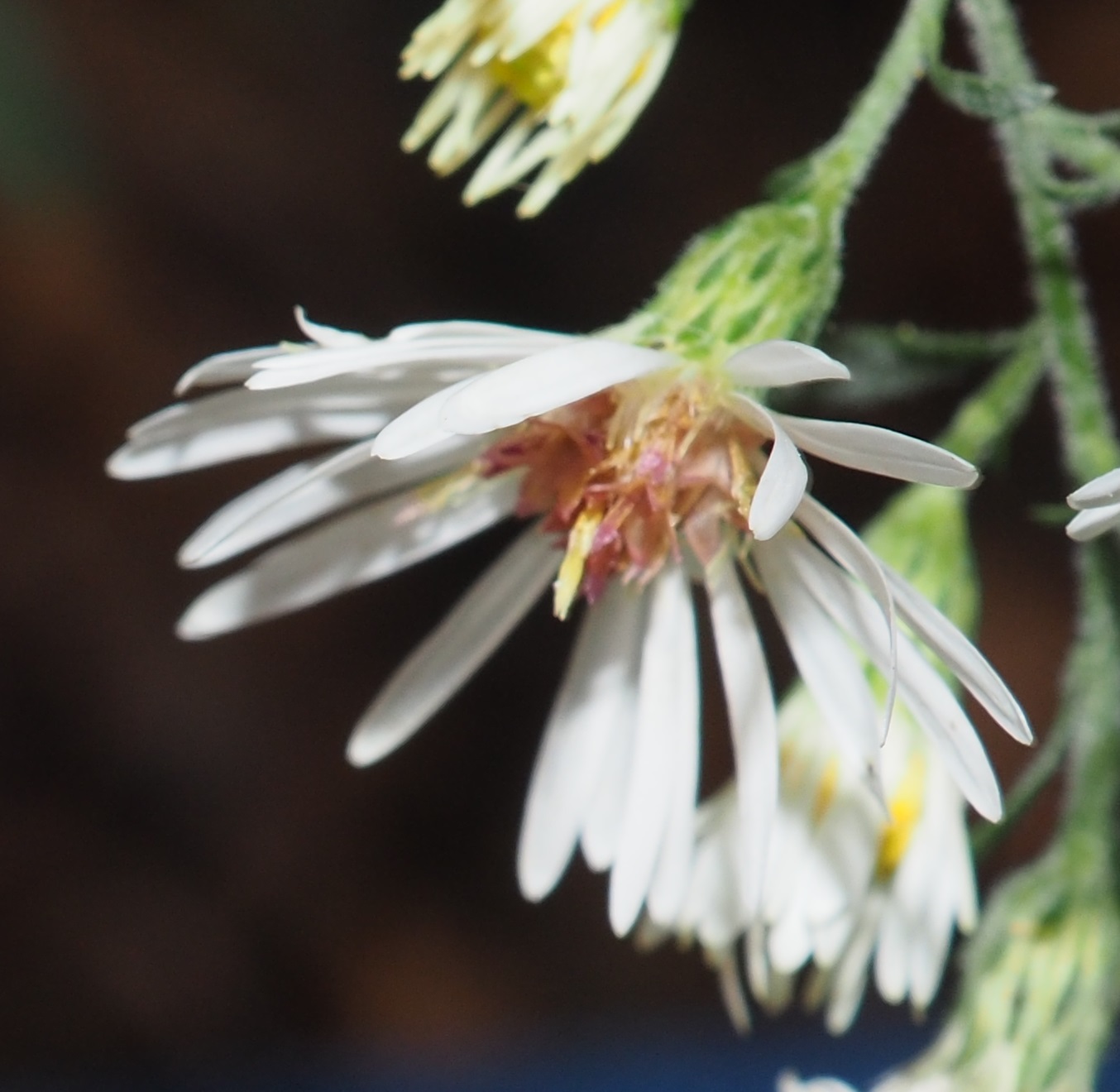
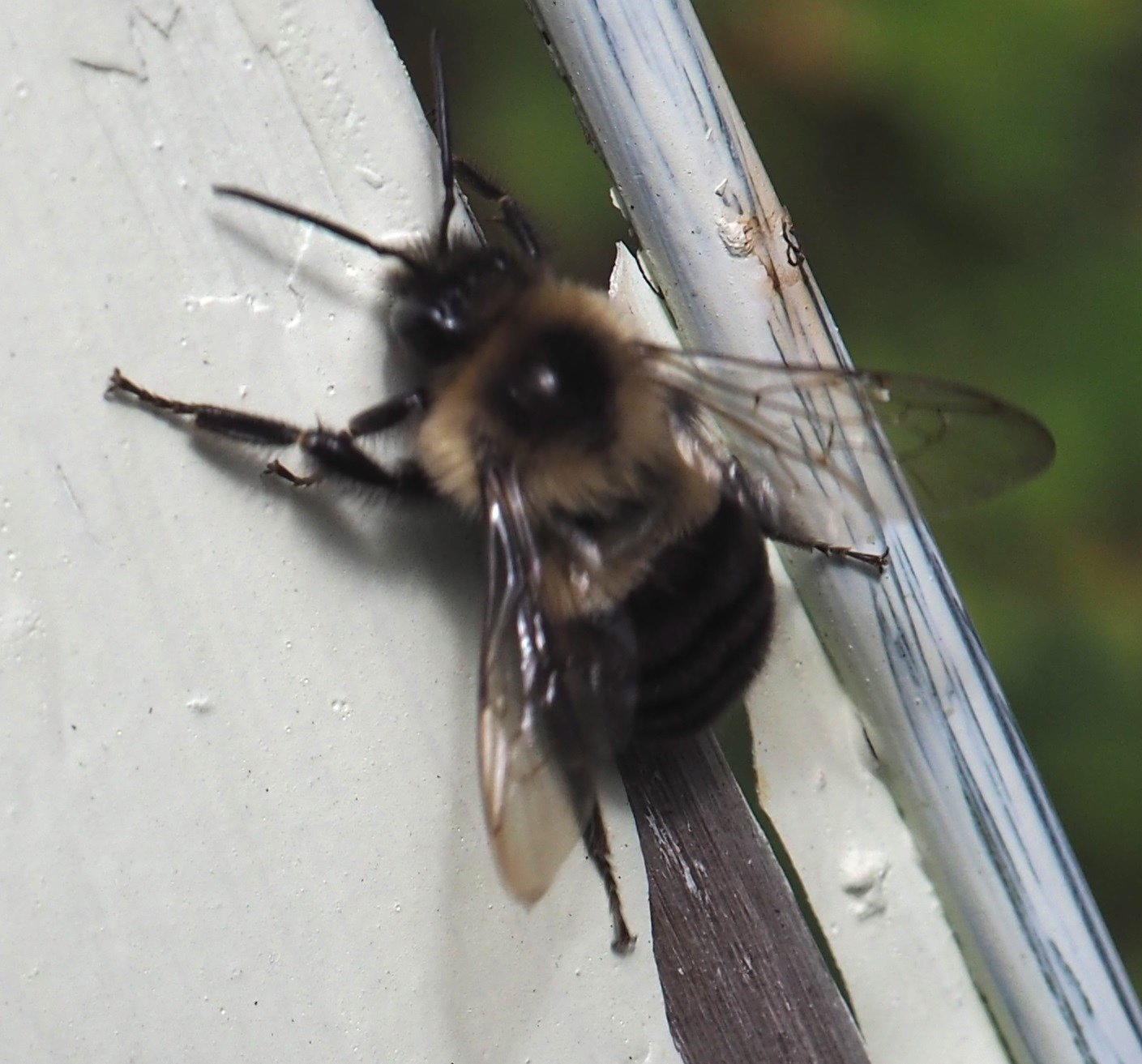

I couldn't resist adding several more instances of the Silky One.
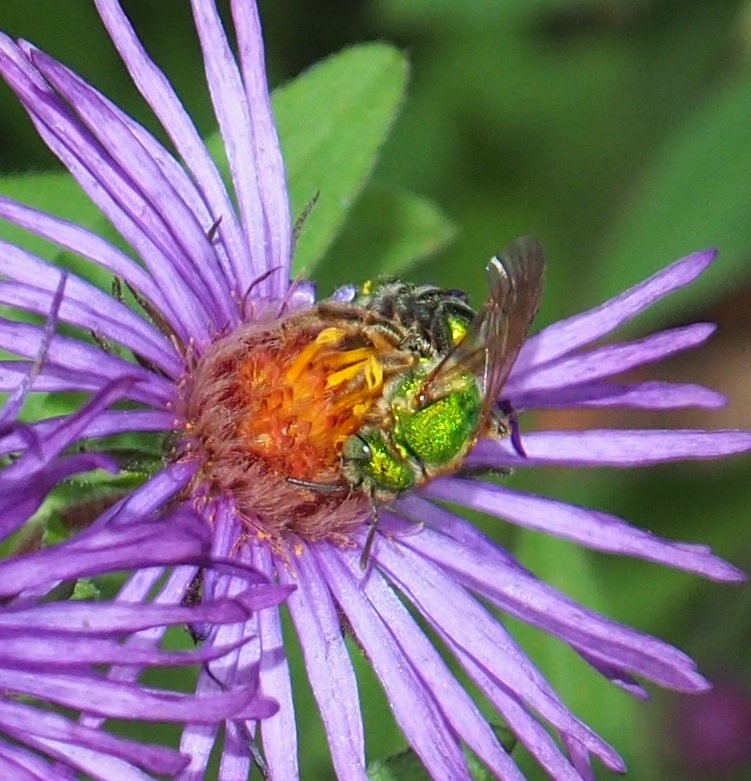
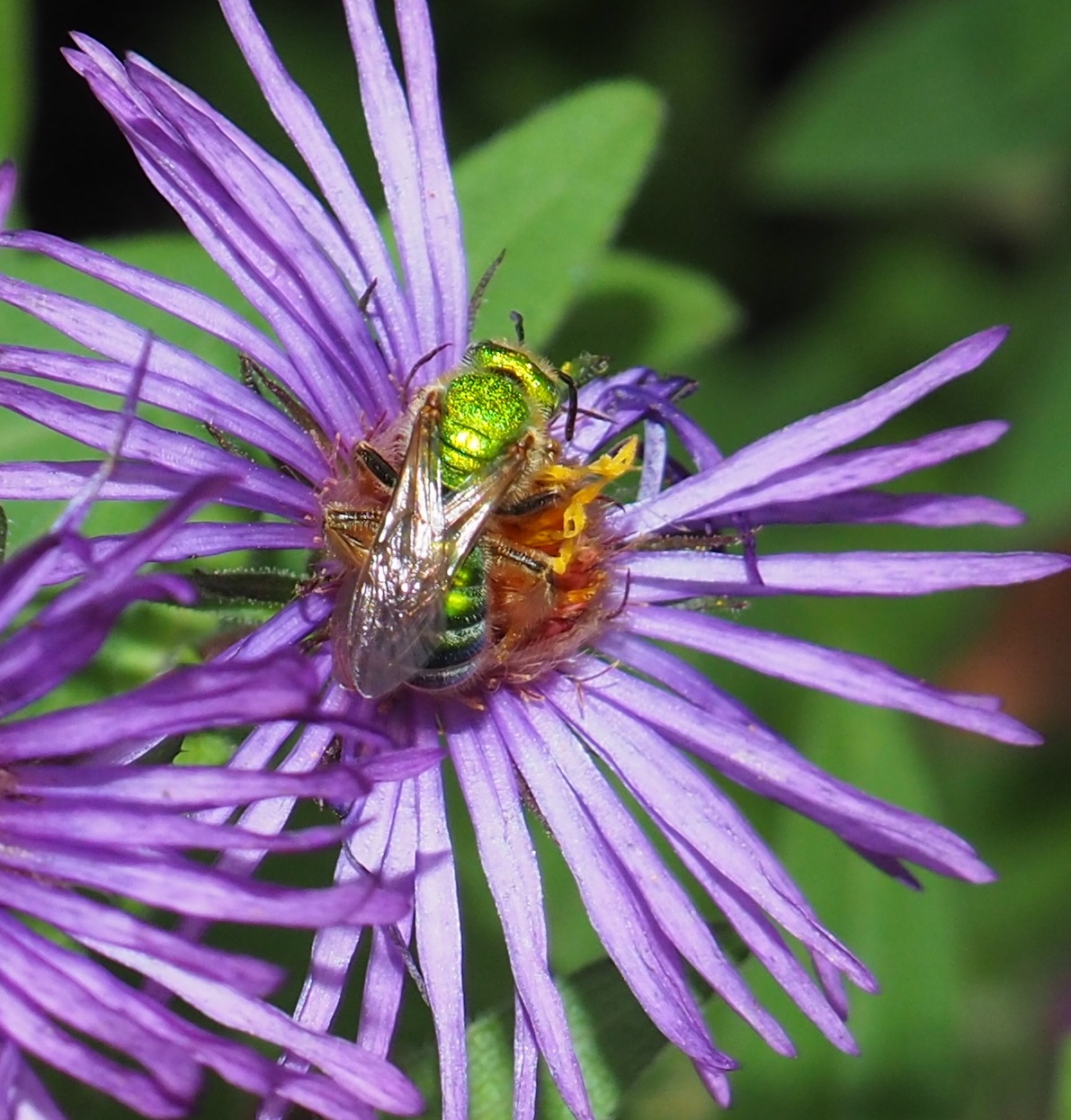

Beetles everyone! This first shiny lady beetle might be an Asian Lady Beetle or maybe a Polished Lady Beetle. But the face on a real Polished Lady Beetle (Image #2 taken in August 2016) has some very nice curlicues and this Number One seems more likely to be the W-face of the Asian. Image #3 is a Spotted Cucumber Beetle. #4 is a beetle we've seen before - a pink and black fuzzy-looking beetle. More soon on this one.
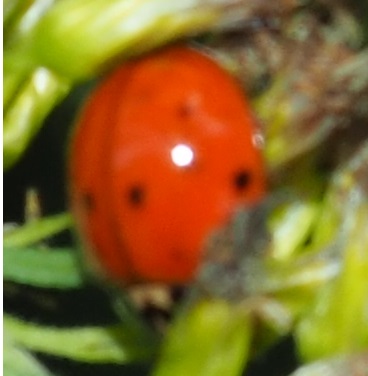
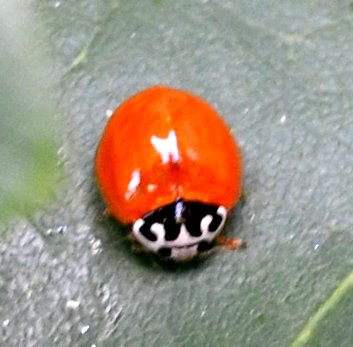
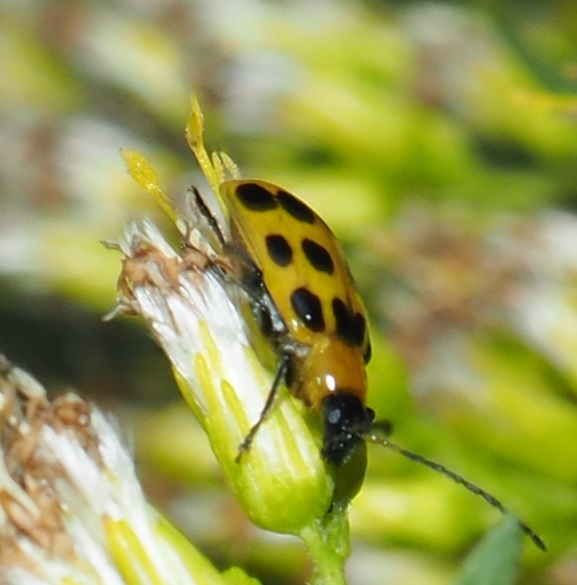
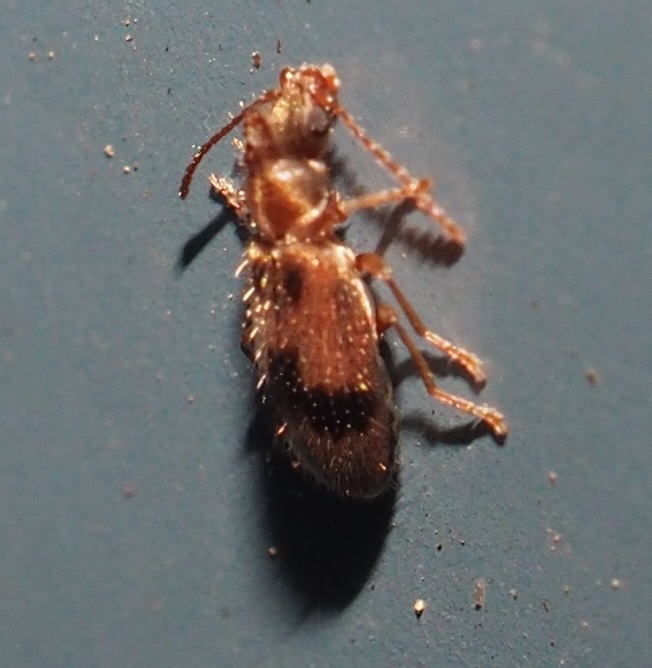
That's about it for beetles. But the bugs were plenty, considering the fading light of autumn.
This is Acanthocephalus terminalis, a leaf-footed long-limbed bug. This one was high up on the corner of a support for the ceiling of the porch. I had to take it from the ground since I couldn't really get it in sight from the porch floor so it is a poor shadow of itself. The second bug in this section is an Assassin Bug, getting quite fat - I haven't seen an adult for a couple of months now. You can see its tannish wings growing. Third is another Drymus unus bug, same species as we saw mating in this same kind of overmatured goldenrod.
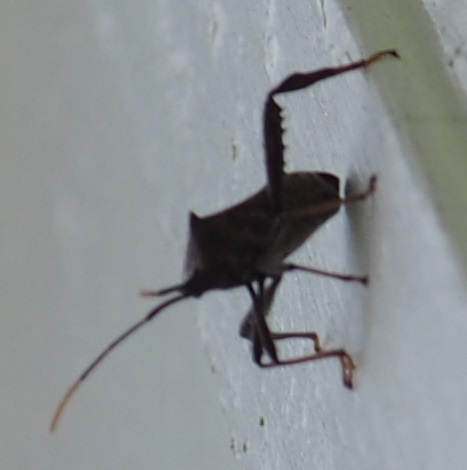
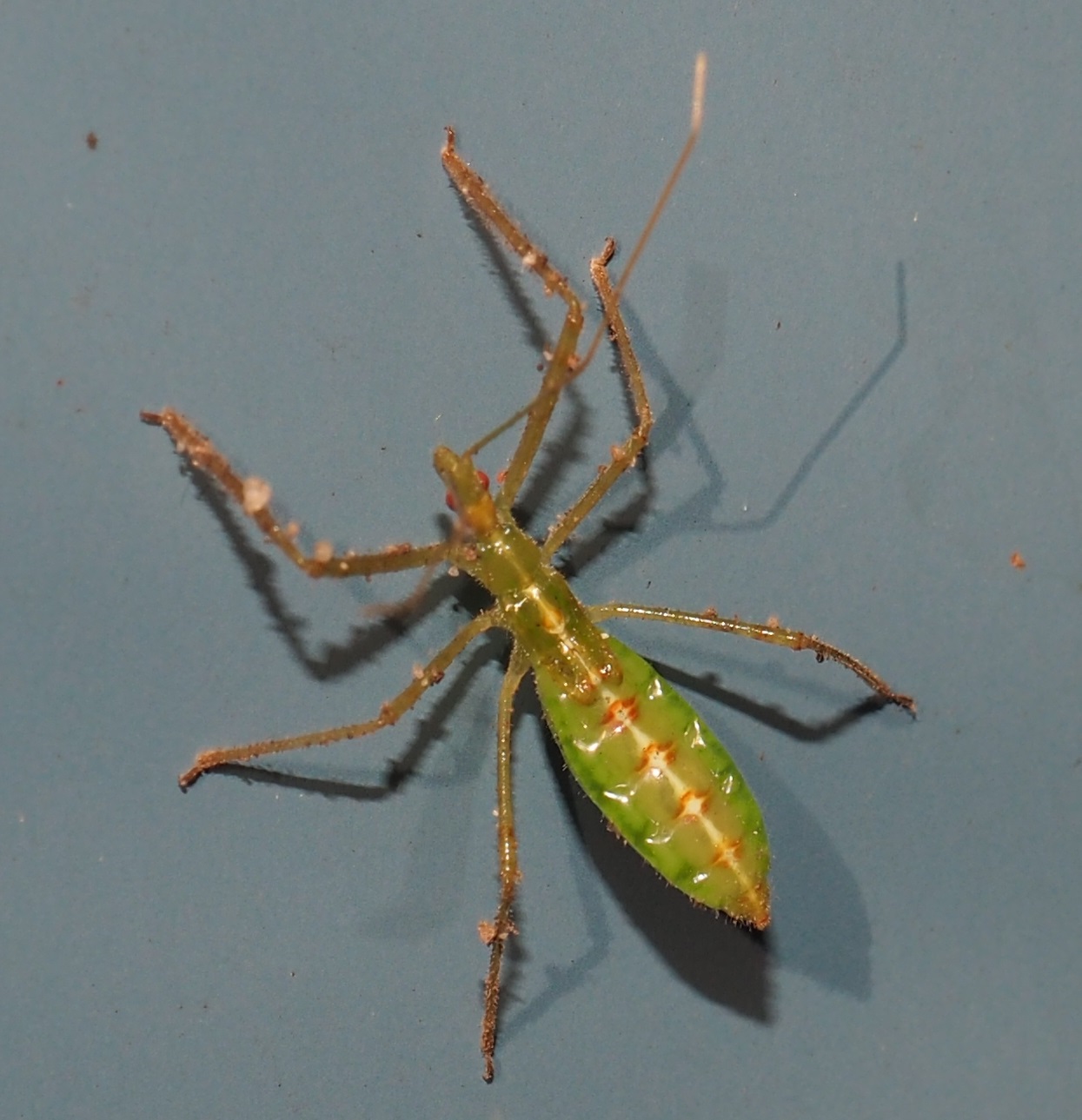
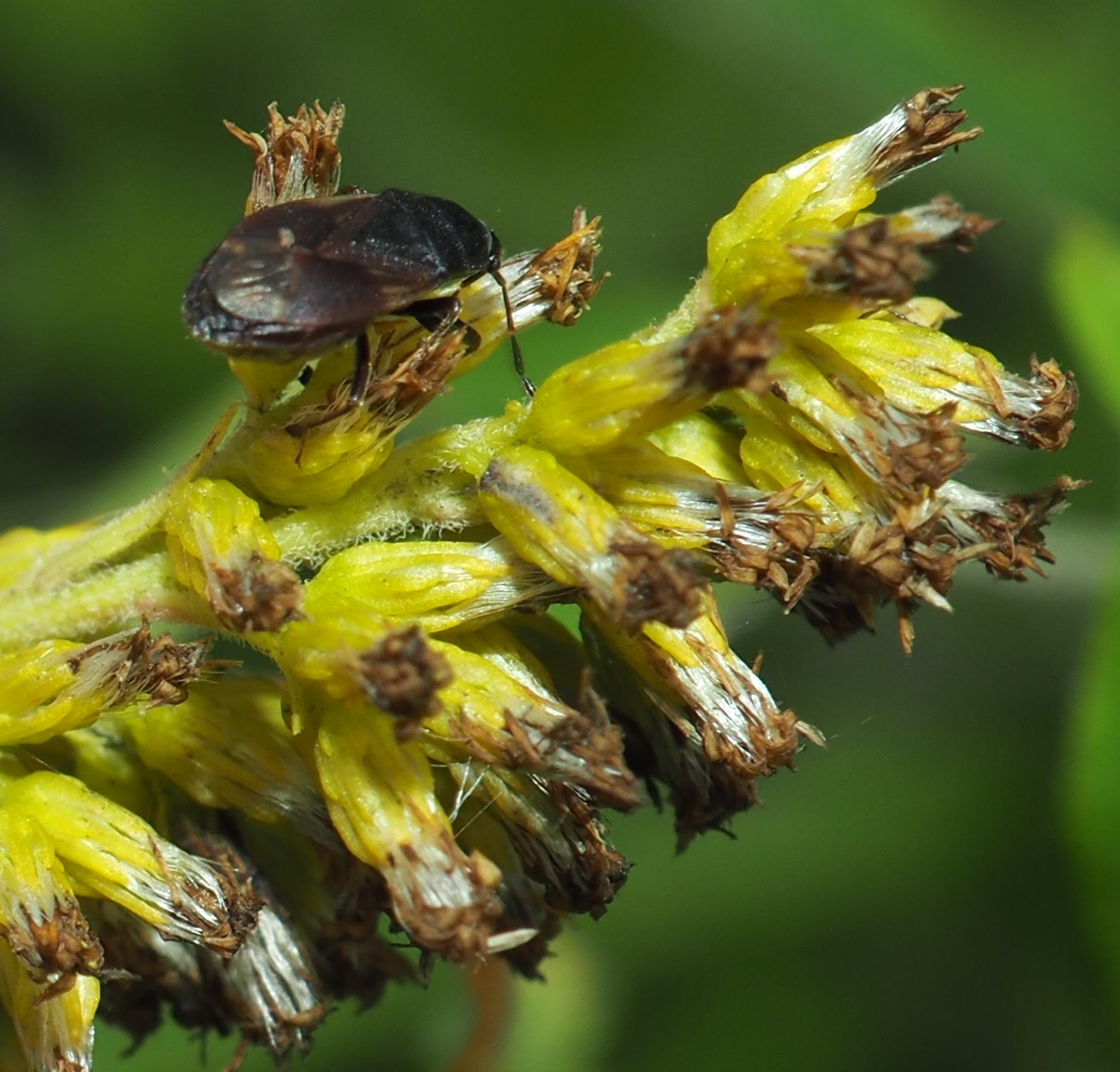
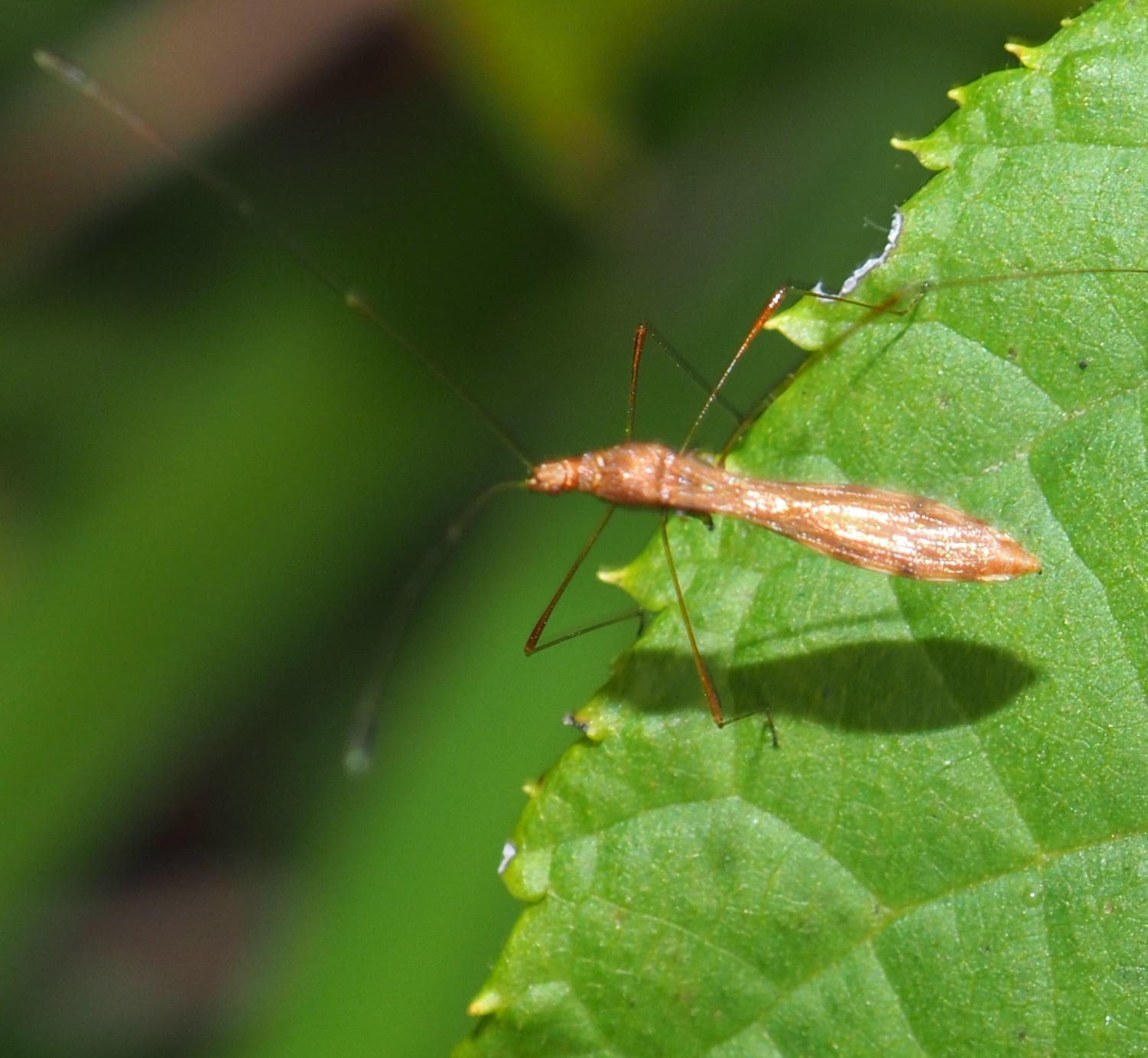
Here is, I believe, the only leafhopper I saw this week. It was a dark part of the quickly coming sunset, so it came out quite dark. It is, of course, a relation of the Candy-striped leafhopper. The second bug is a planthopper, in fact, the Northern Flatid Planthopper (Flatormenis proxima). Some of those planthopper nymphs that we saw a month or more before might have been the nymphs of this adult or imago. This one was probably on an aster leaf. The third one dropped to the ground when I got close enough to get a second view. By the way,
you probably remember a while back when we were seeing a lot of nymphal Two-lined Planthoppers. About a month ago, I saw a green planthopper. It did not have the two brownish lines of the adult Two-lined Planthoppers. It didn't like my trying to get the camera in far enough to snap it and eventually it took off.
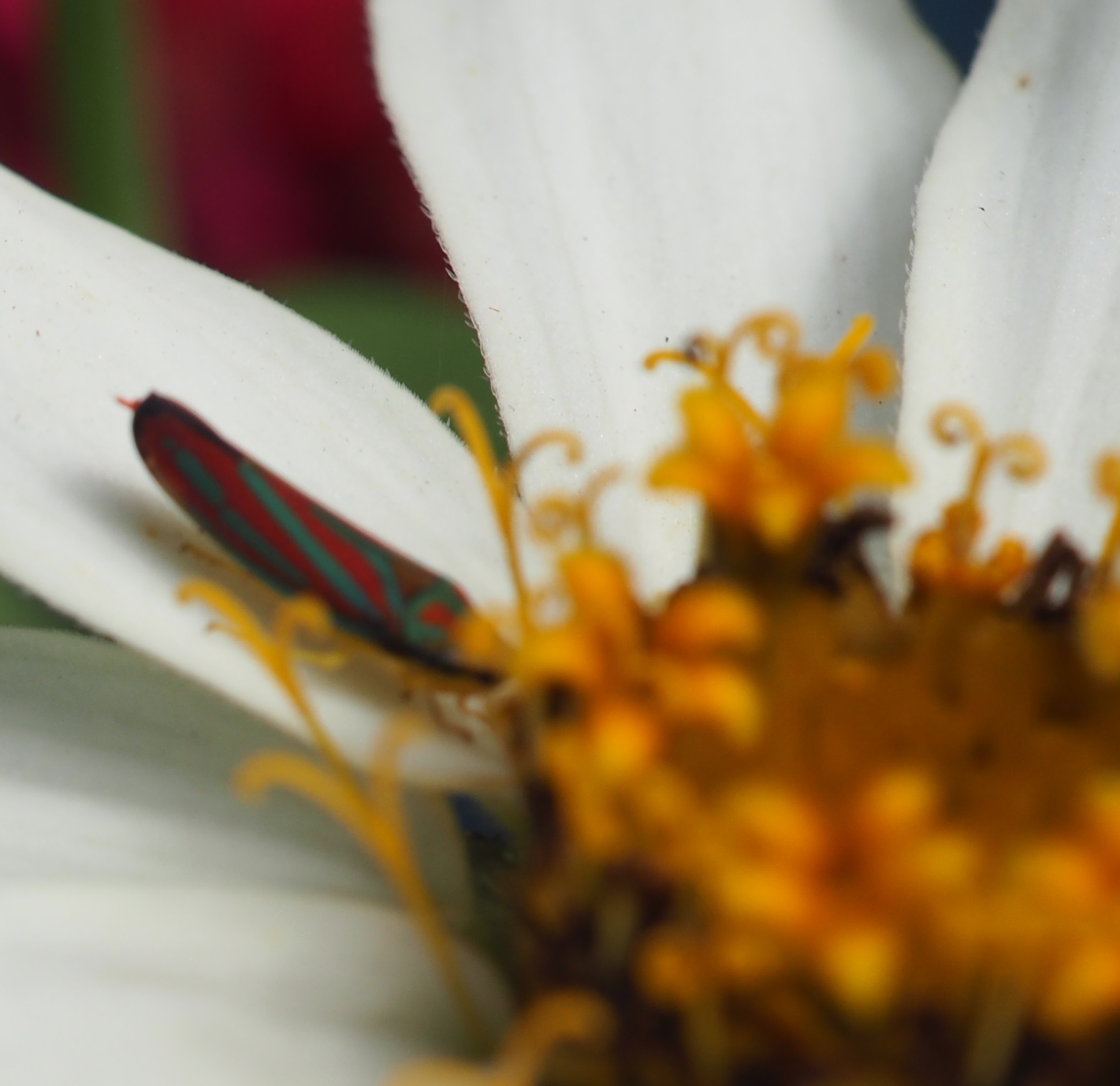
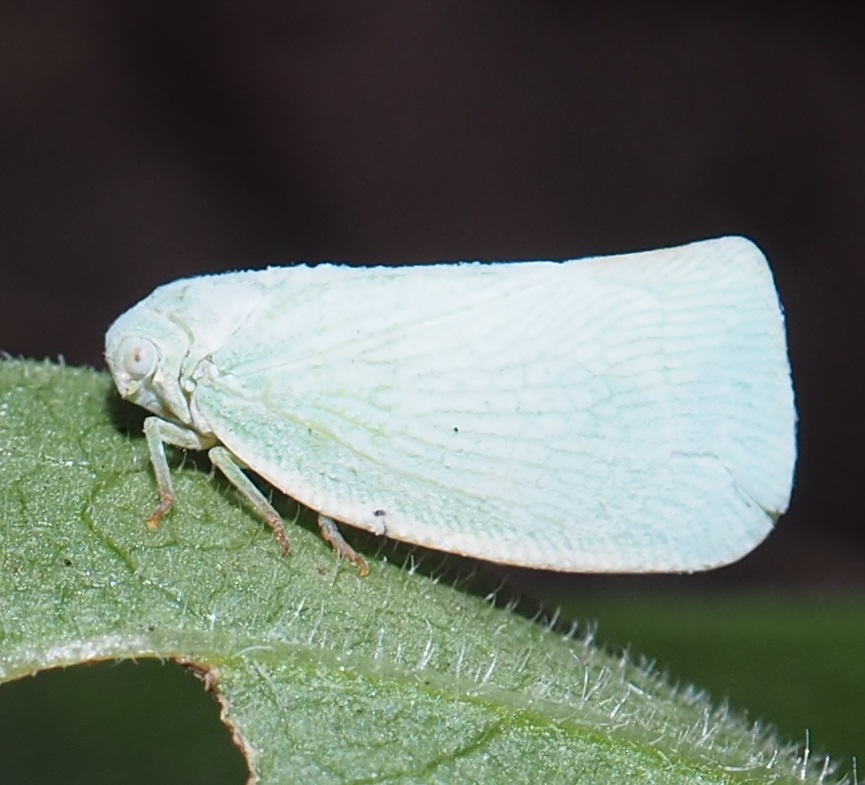

I've been trying to match up the 5-spotted plant bug nymph from last week with some of the Lygus bugs that appeared this week and last. There is one that showed up this week (Image 2); and another (#3) from this past week called Tarnished Plant Bug. The nymph may have been the nymph of the Tarnished Plant Bug.
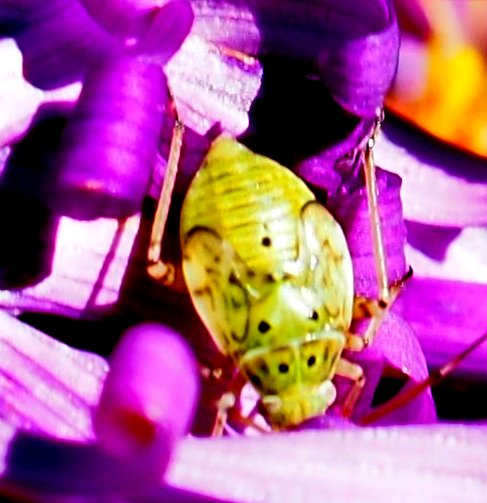
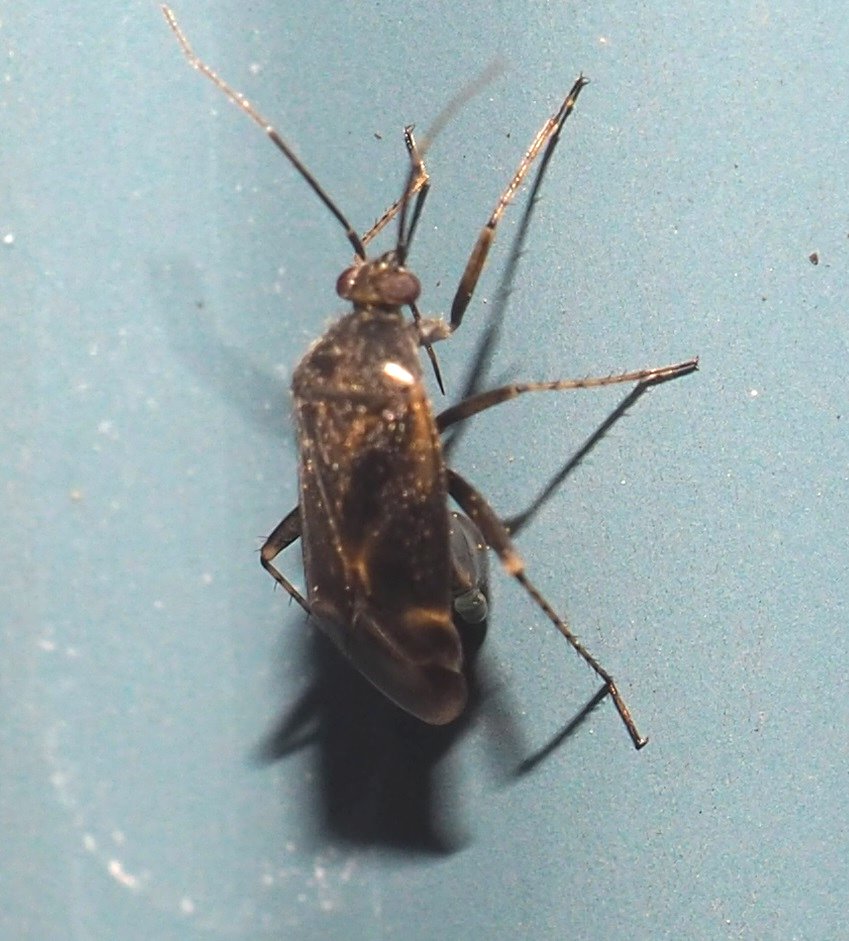
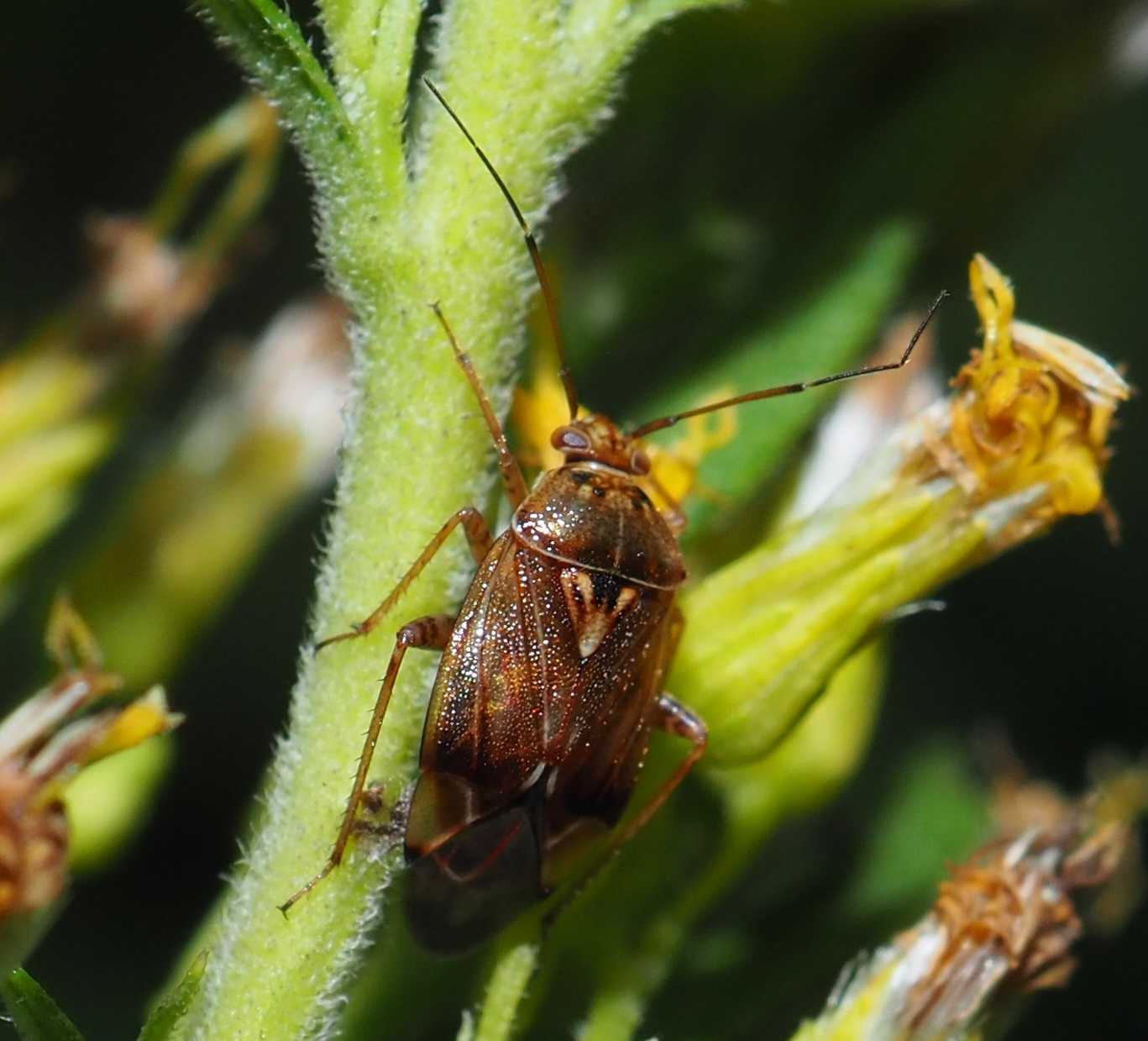
Since the bugs have scurried off into the cupboards, (oh no, did I say that?) We could go off on a tack with the butterflies. We have as many of the White Cabbage butterflies as anyone could want, but the one that really warmed my heart was the Gray Hairstreak. I've seen them before but this one was in just the perfect sunlight to show its secret colors coming and going.
The Yellow-necked Scape Moth glistens in this sun.
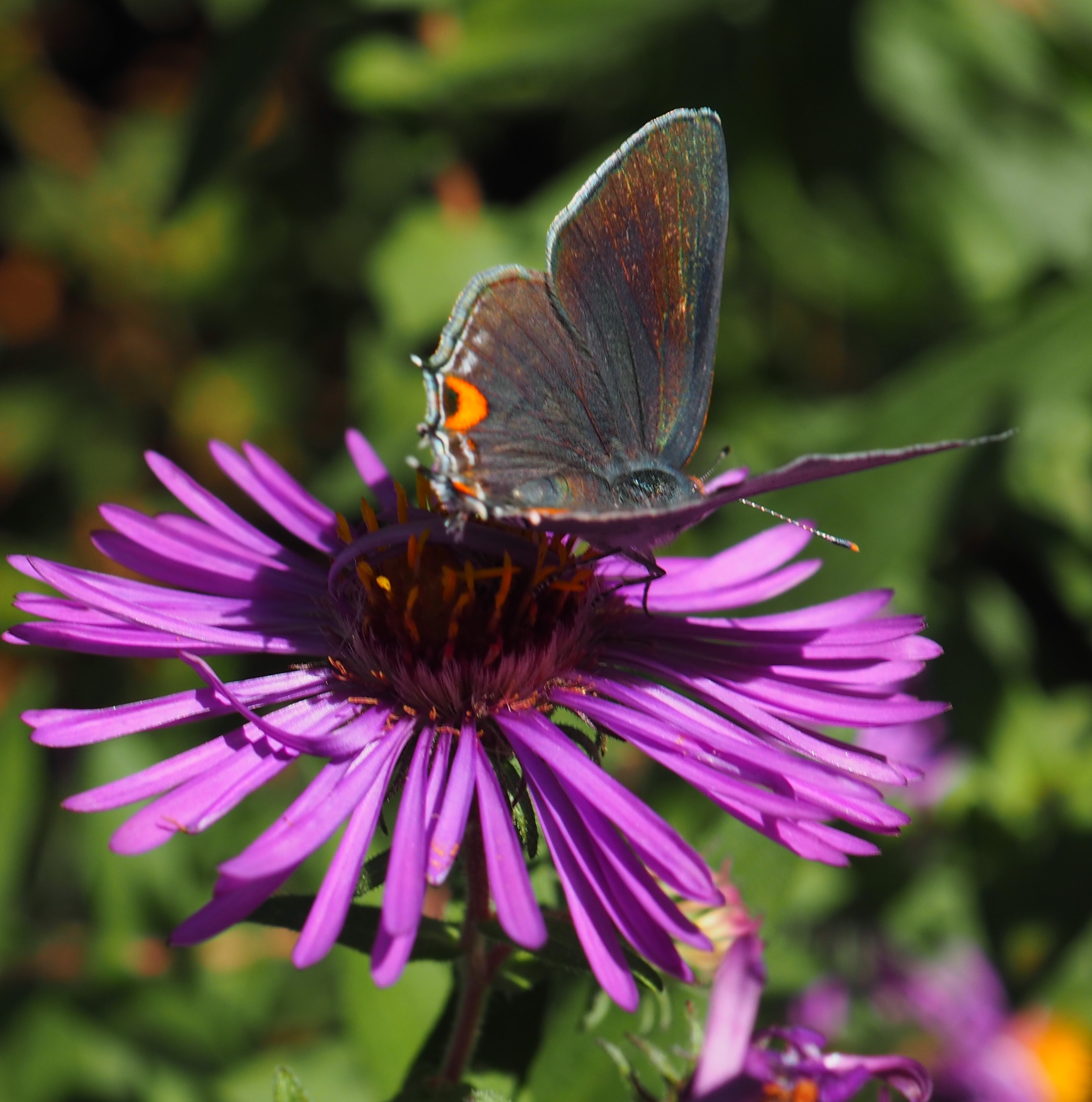
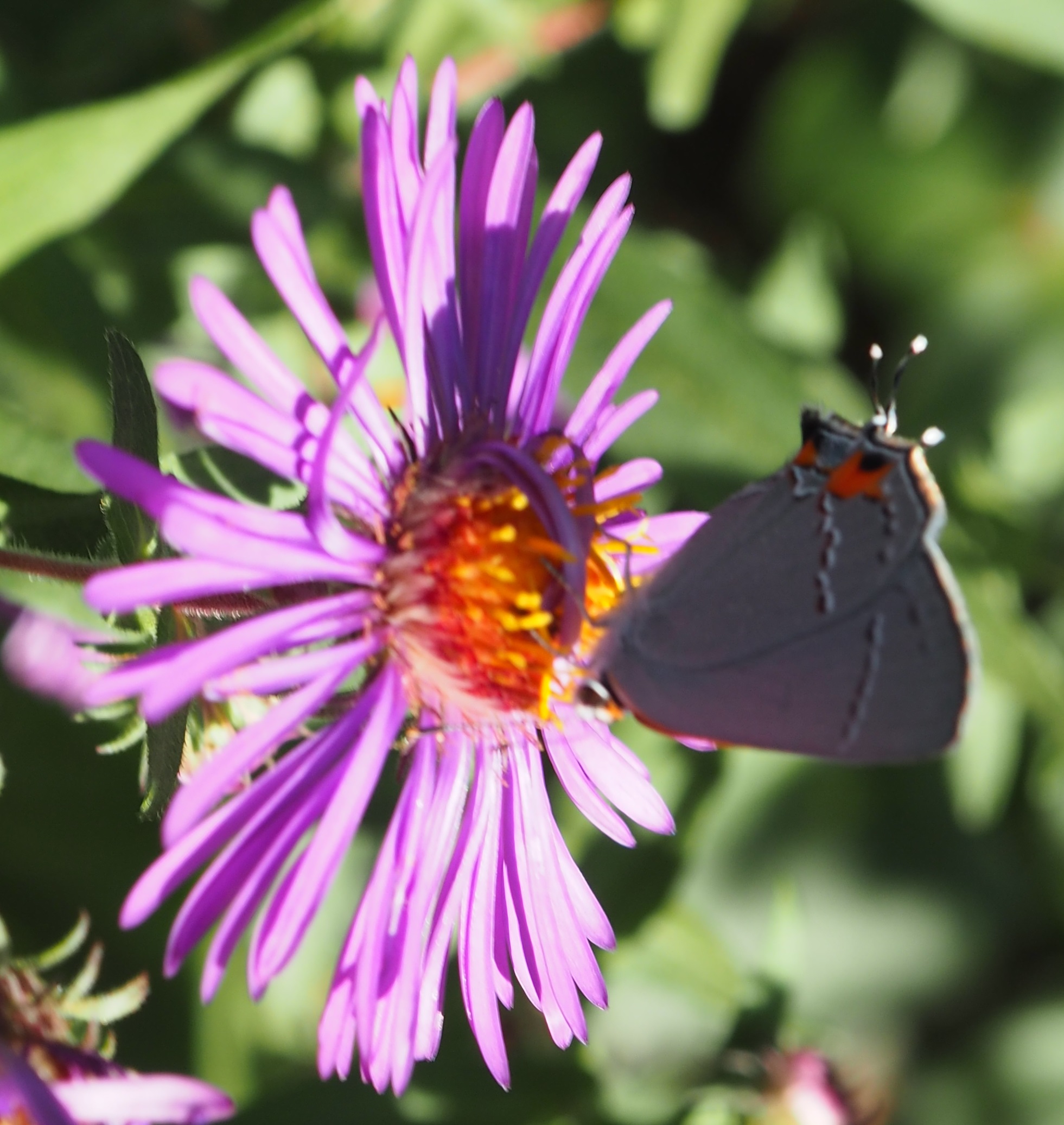
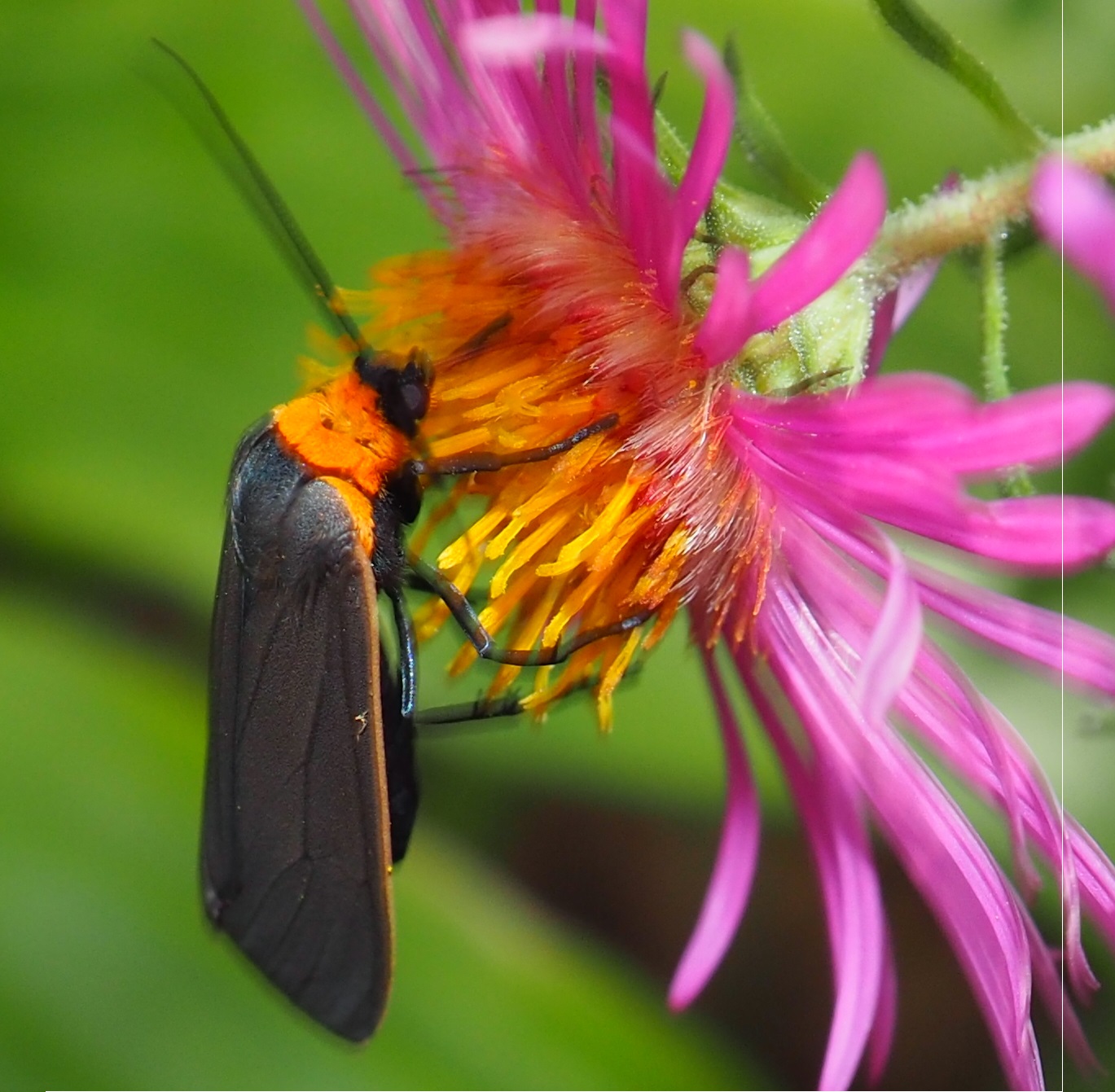
And Skippers. Skippers are usually quite a lot smaller than the butterflies, but they aren't too different in size from the little butterflies or even the hairstreaks. Moths can be very large, like the Saturniids like Luna, Cecropia, and a few others. Or they can be very tiny and usually people don't see them - they aren't crowd-seekers. So the Yellow-necked Scape Moth is fairly large but the first time I saw one I thought it was a beetle. Here is the little Checkered Skipper. The Moth Fly is a Fly that resembles a Moth. Picture #3 might better be called a Mystery creature since I've never seen one like it before. It was hanging in the goldenrod. Oh! One more thing. Butterflies, Moths and Skippers all pass through a larval stage called in their case caterpillars. Picture #4 is a typical larva, though we can't tell what its adult form might be. (Beetles also have larval stages (called grubs), and so do flies, wasps, and most other insects. Bugs don't have any such larval stages, but instead they pass from a form that looks more or less like the adult bug itself, and this form is called the nymph.) This will all be on the final.
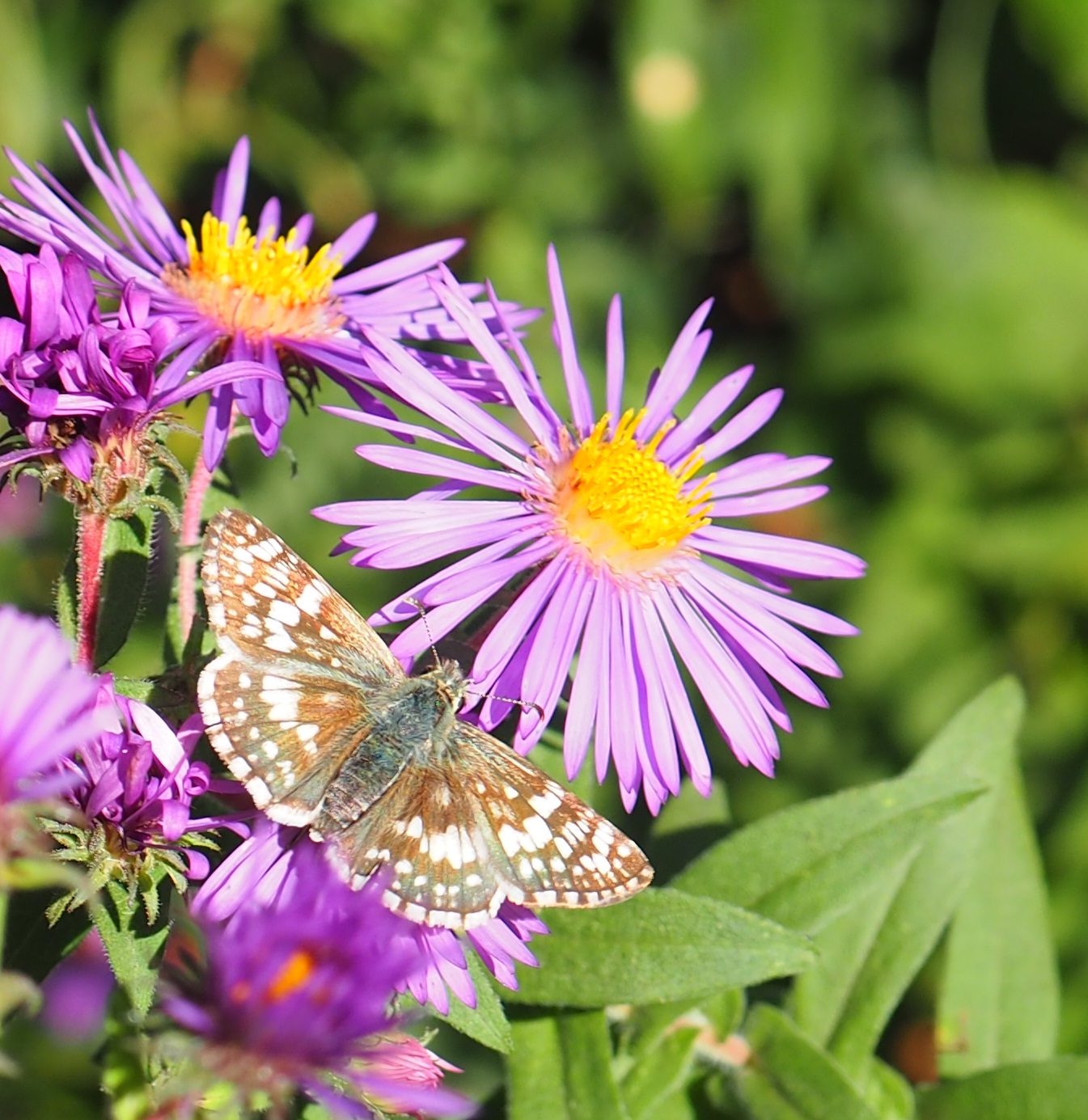

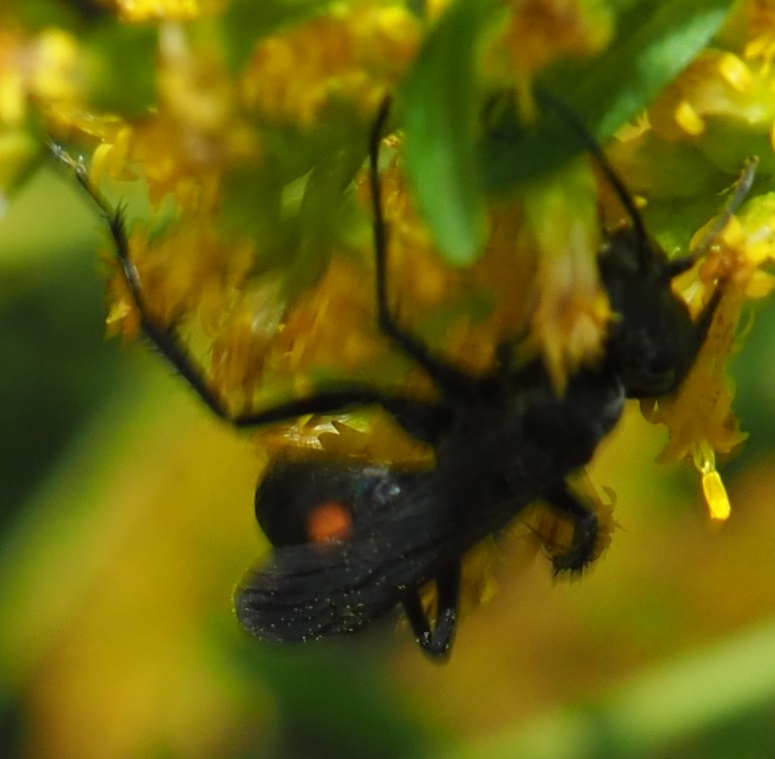
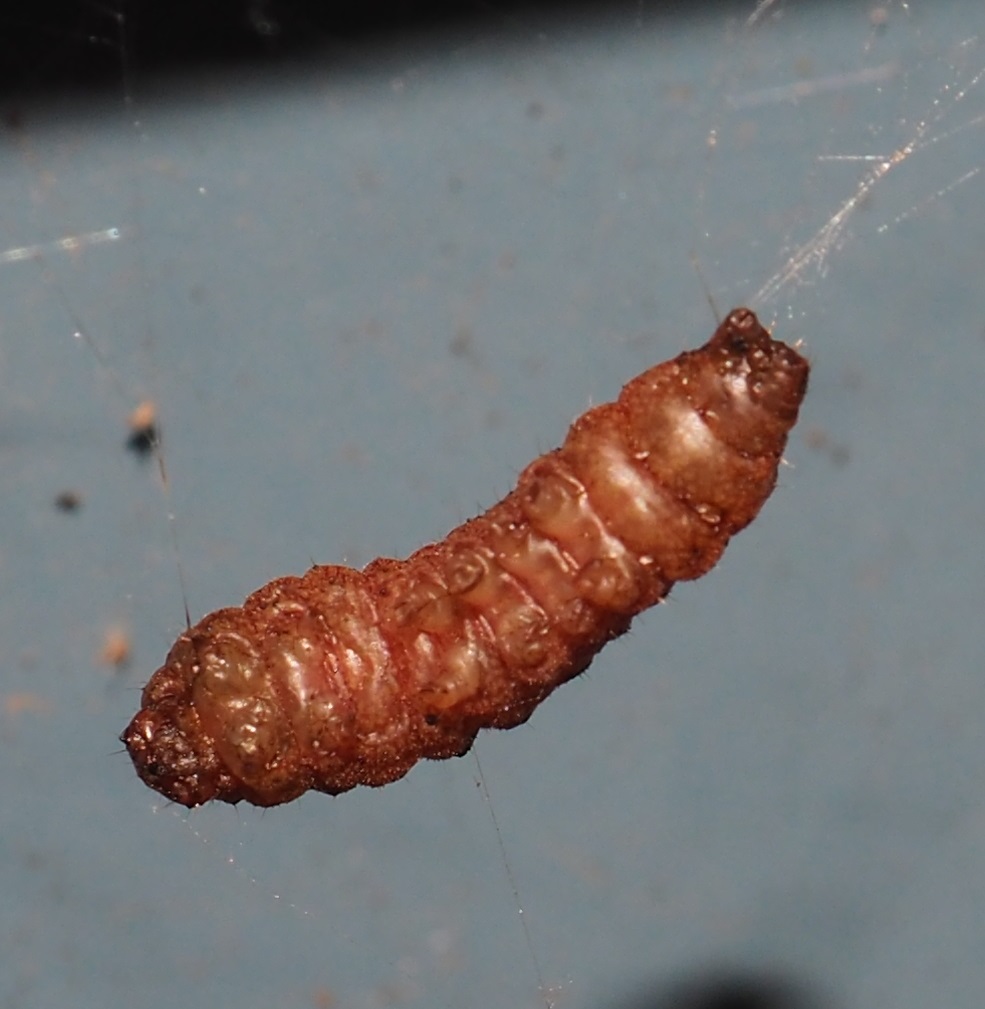
Now on to the flies. First one in sight was this mosquito. Second was this fungus gnat. #3 is a woodlouse (pillbug) hunter, Melanophora roralis. If a whitefly is a fly, here is some room for it. :-)
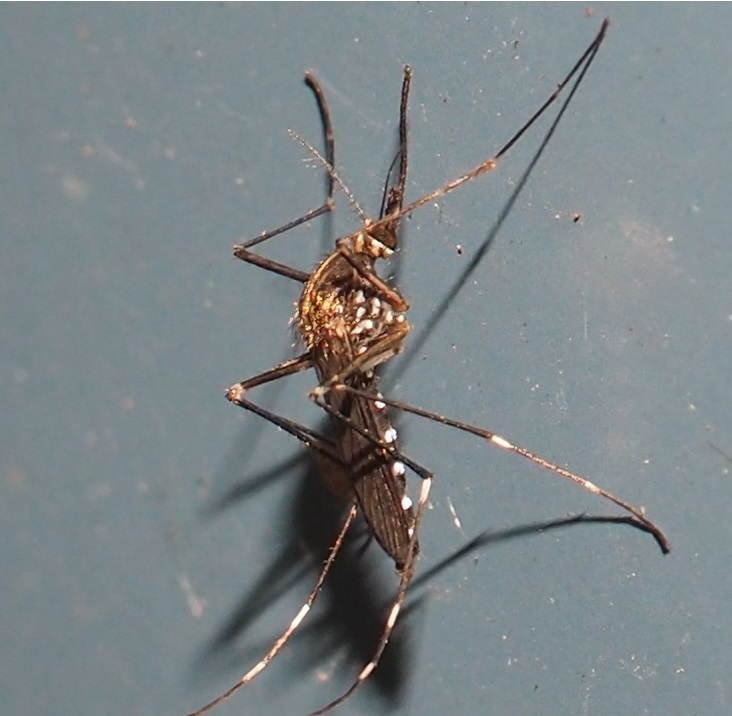
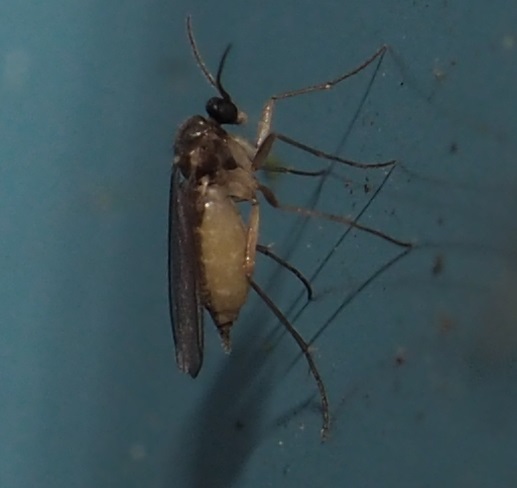
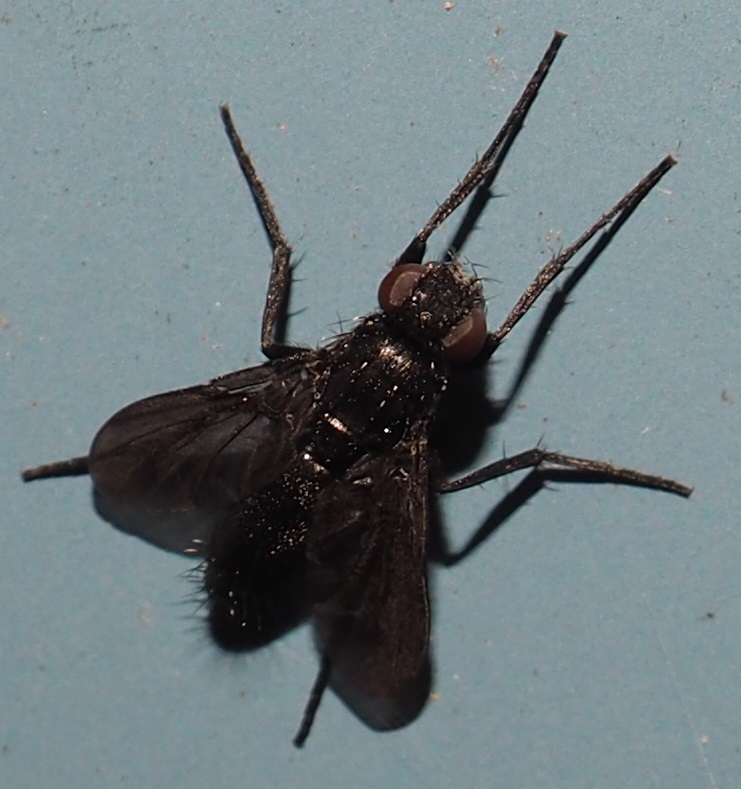
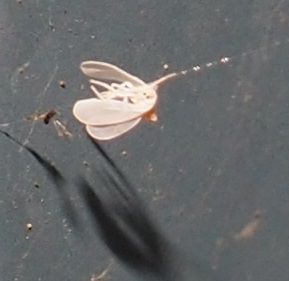
We seem to have run out of flies for this week. So we move on to the next unusual photo. This may have been a brown lacewing of some type. Its outer coat looks almost like that of a poodle. But the next photo, taken within a minute of the first one, looks like the normal brown lacewing. (Note: when I say "normal" while discussing a creature that can take on many forms, I mean "normal for this yard".) This third picture MIGHT be yet another lacewing, or MIGHT be an unsuspecting fly.
.jpg)

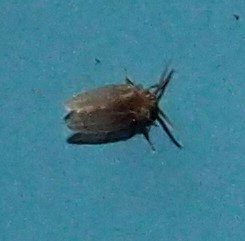
Here are a few very whimsical creatures - I particularly like the photo of living Pasta. Of course, the newish Pillbug is delightful too. One more flaky question: Are these Living Beings, and What are They?
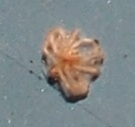
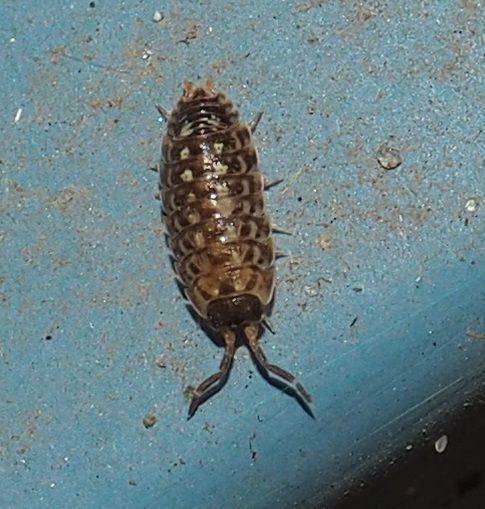
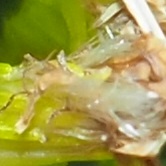
So I suppose we have gotten to the spiders! In this first one, what is in the big barrel this Common House Spider is trying to open? I don't suppose the wilderness has anything like an electric can opener? In picture 2, is this young male CHS getting ready to fight? I wonder how to tell a long-jawed spider from a harvestman. They have both got eight legs. All the legs are much longer than they would be for an LJS. As I recall, the long-jawed spiders have extra-long first two pairs of legs. Since that large lobe at the top of the picture is the abdomen, those two extra-long pairs of legs are at the bottom (the head or cephalothorax). And do you remember that a harvestman has only one body segment to the spider's two. I believe that we nailed it by calling this a Long-jawed Spider and not a Harvestman.
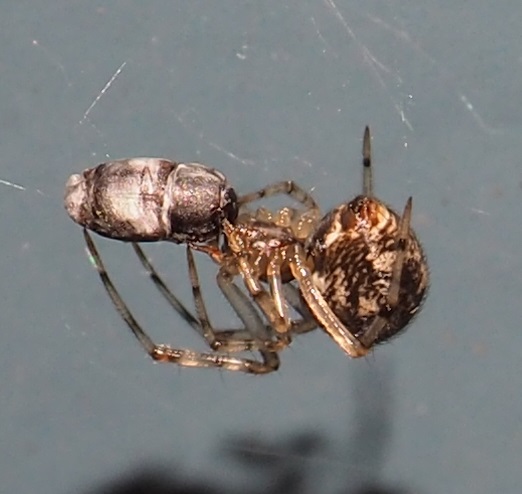
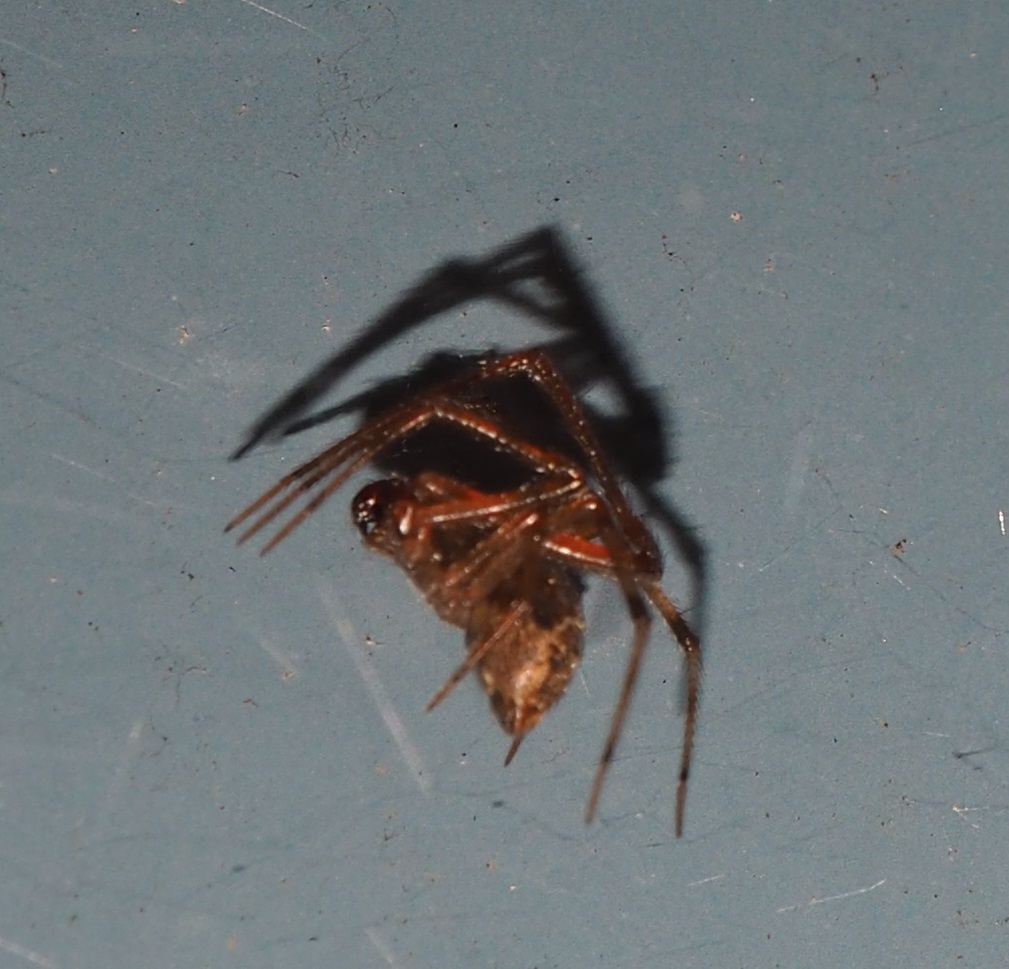
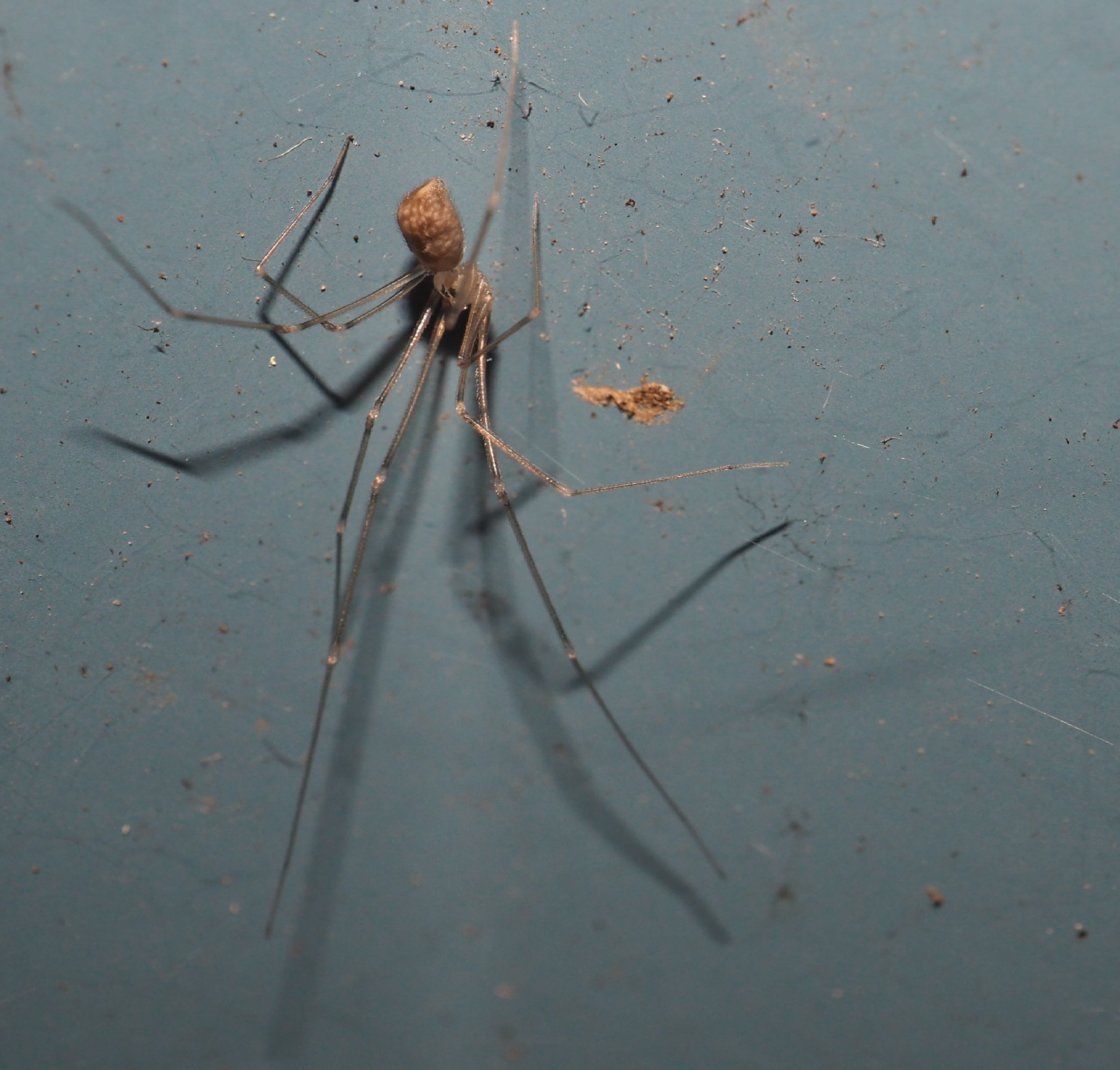
Here are a few more surprises. Do we know (anyone? anyone?) what this first spider is? I do believe that picture #2 shows a Pirate Spider...We haven't seen one of these for a few months now. Maybe they are back to the Yard after a summer's visit to other climes? Is this big handsome striped spider a Wolf Spider? Look at all those blackish teeth... I think so. The last two spider pictures are of how carefully the Common House Spider packages her future meals.
The "Food on a Line" one is particularly strung for all the guests to see. Just kidding. A guest is usually a meal eventually.
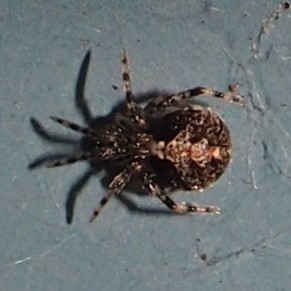
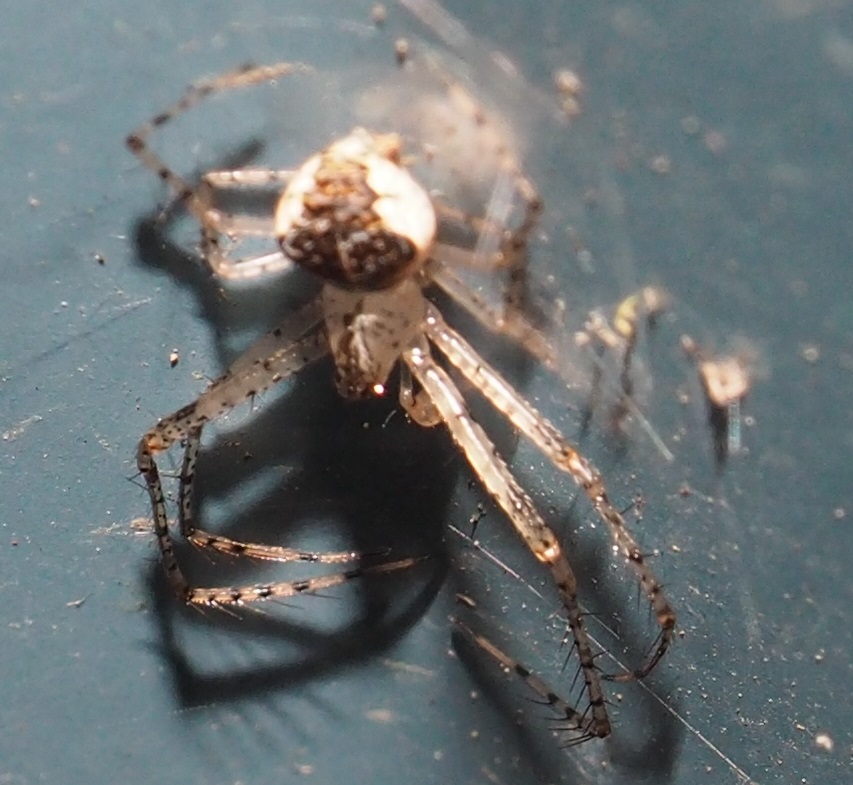
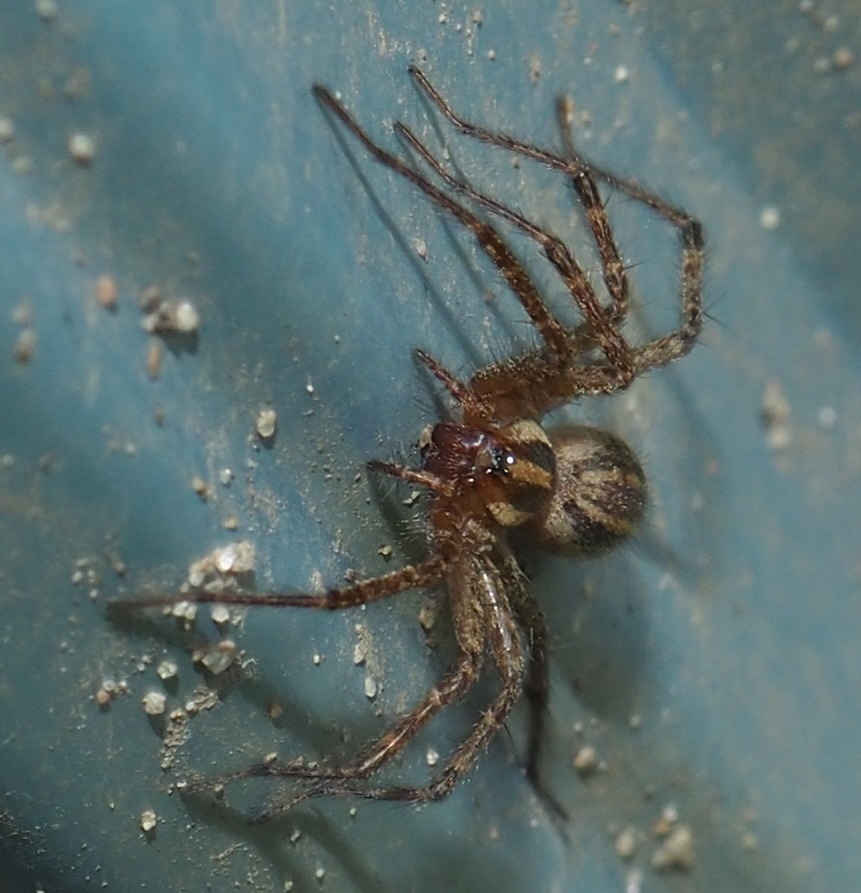


We can now give a look at the wasps we've seen. Most of the flower-sucking wasps are gone for the season. (But what a feast it was! For a couple of weeks it was Yeats' "bee-loud glade".) The first two here are probably the same ichneumonoid or braconid wasp. Oh wait, do you see any wings? These pictures are probably of a braconid wasp, and a female to boot. Is Number 3 a tiny wasp or a Diapriid? Last but not least those little wasp cocoons are just waiting to emerge and start flying around to find a new caterpillar to invade (maybe next year or just in another climate.)
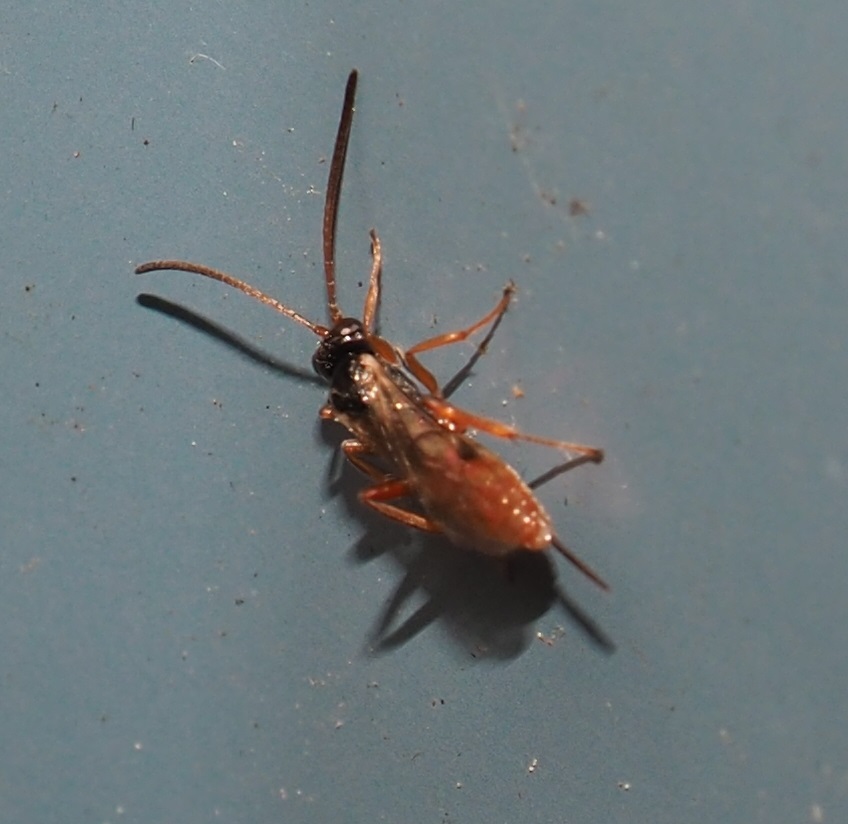
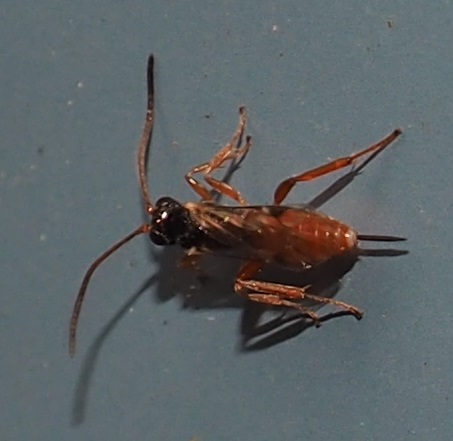
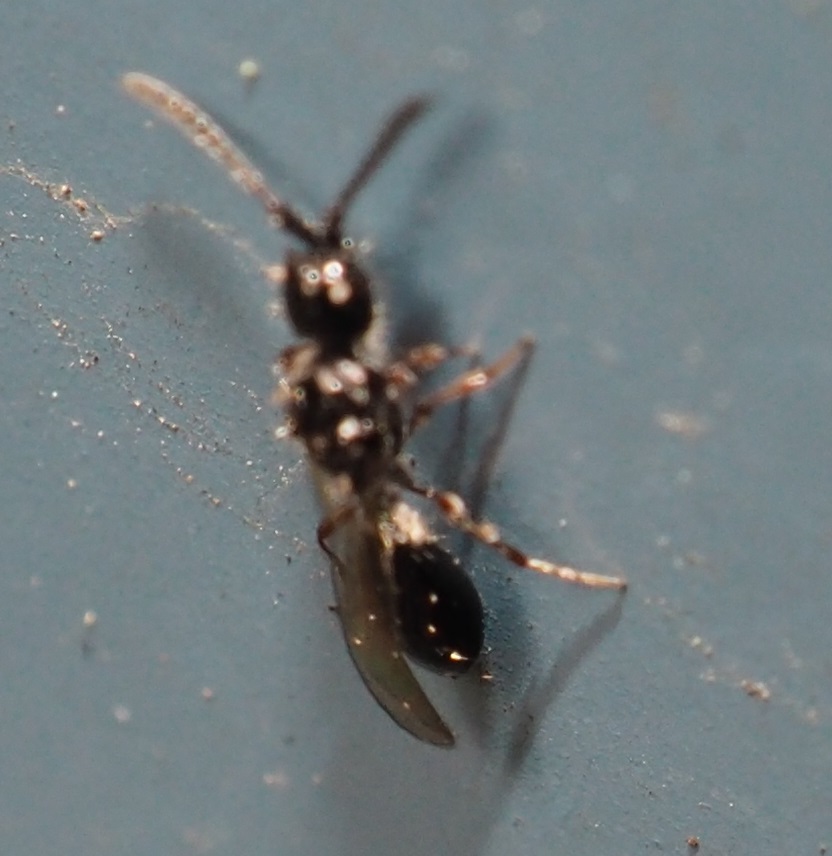
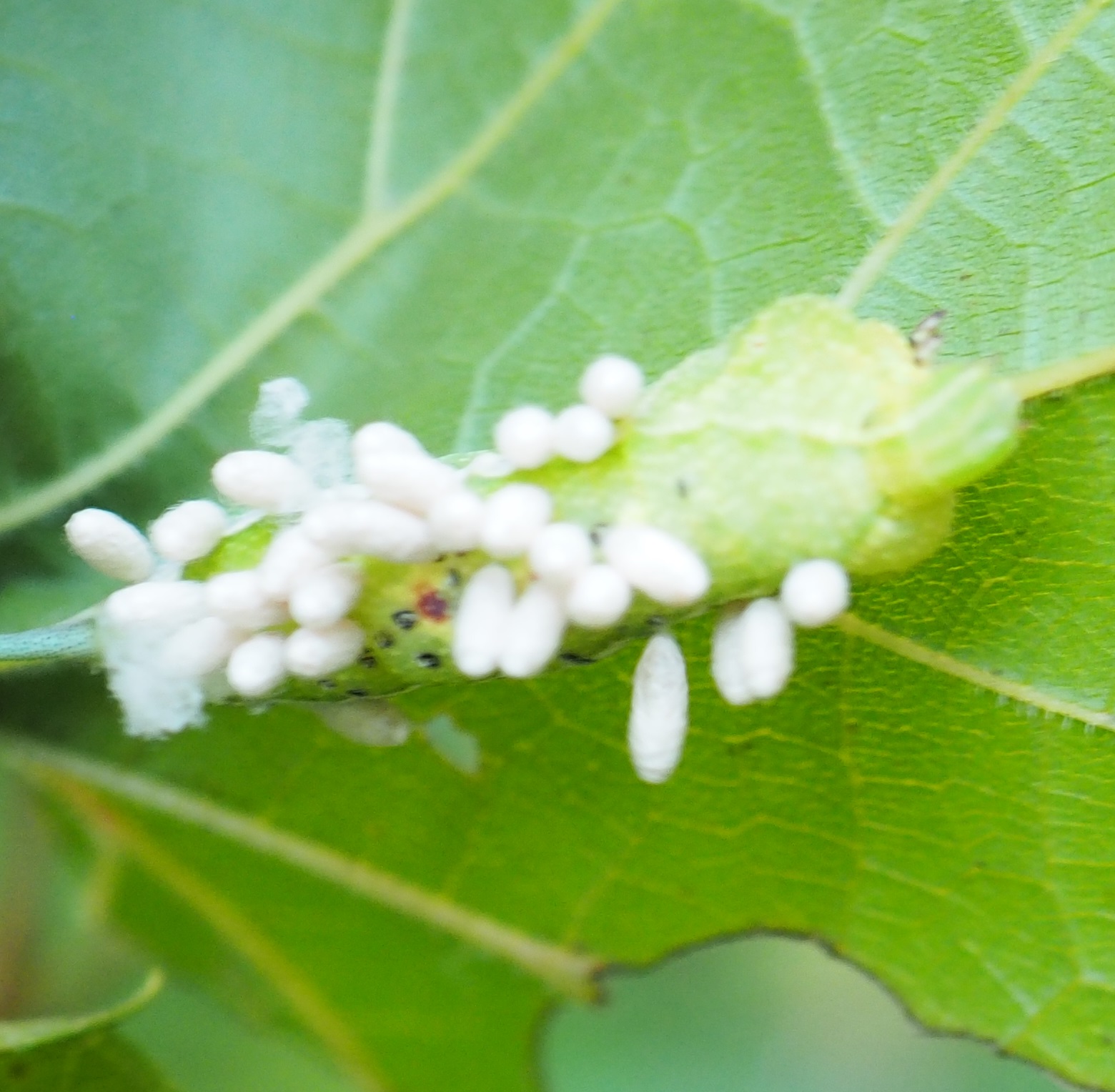
You are probably wondering where Froggy is? Me too. I didn't see hide nor hair of the usual customer. But the lilies are pretty nice. And what asters are still hanging over the pond.
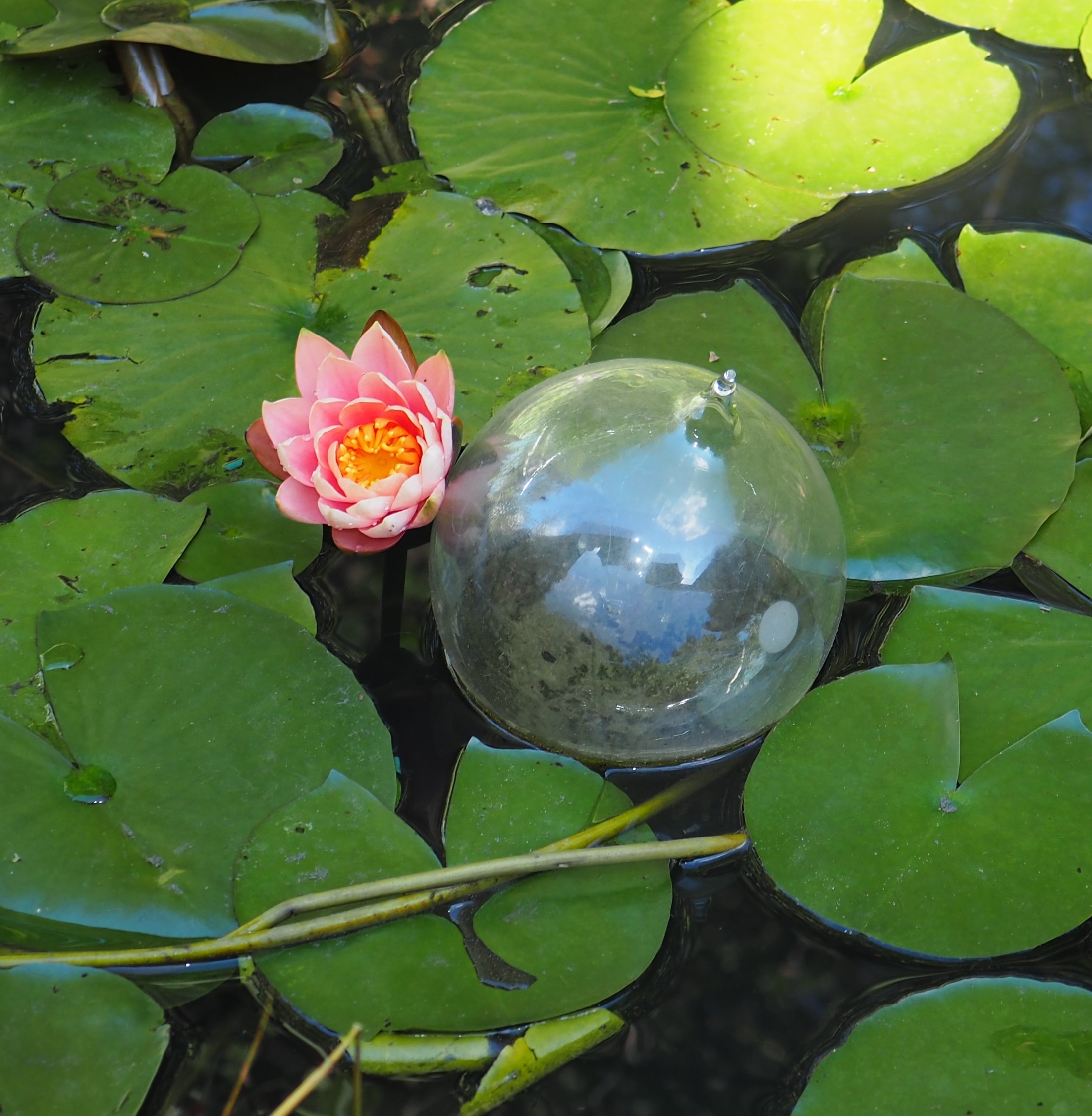
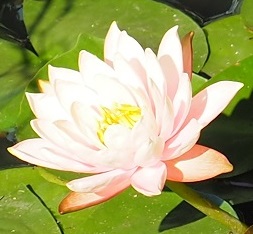
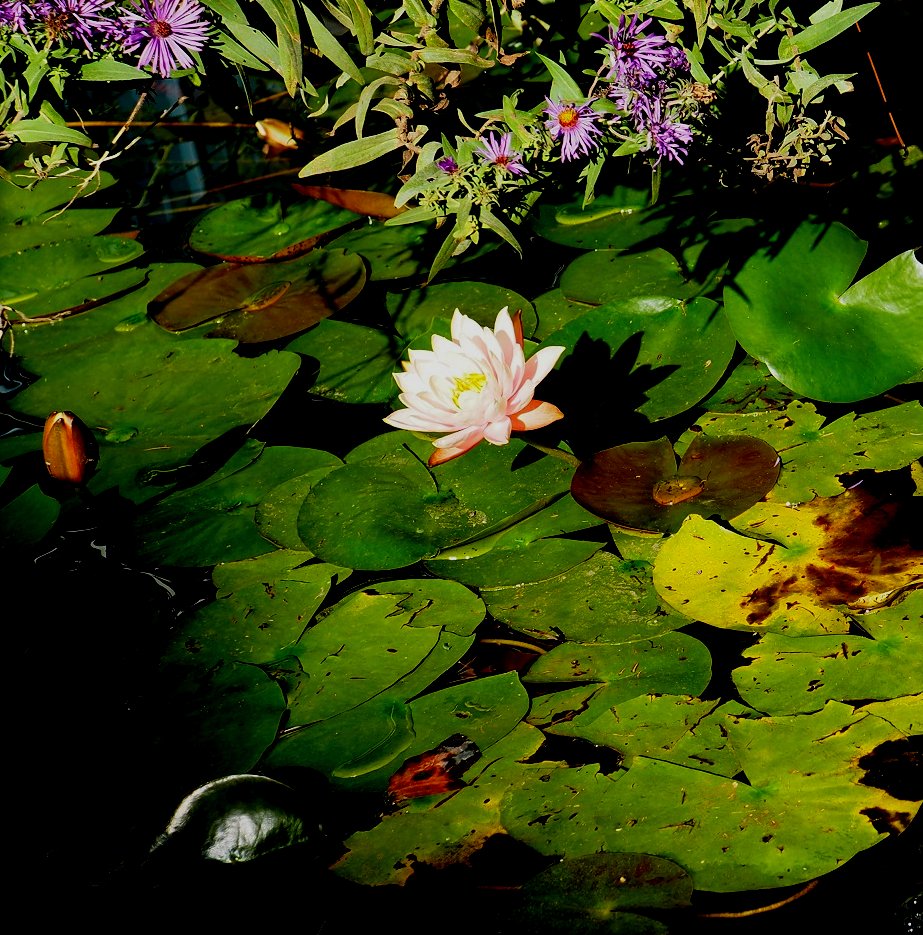
The summer seemed to end almost all at once. But I'm sure we will keep seeing new things till into November, maybe a few fewer but last year wasn't too bad. I hope everyone is doing well - keep it up. Oh, my. Did I tell you that I fell in the garden a few weeks ago? Now I have one of those emergency alert pendants that has a button you can push to get help when you can't get up off the ground. Life gets weirder and weirder. I think it's time to start diarizing. Anyway:
Love to all, Martha
Back to September 30, 2018
Forward to October 14, 2018
Back to main menu
copyright Martha O'Kennon 2018
 -
-


 -
-








































.jpg)



















